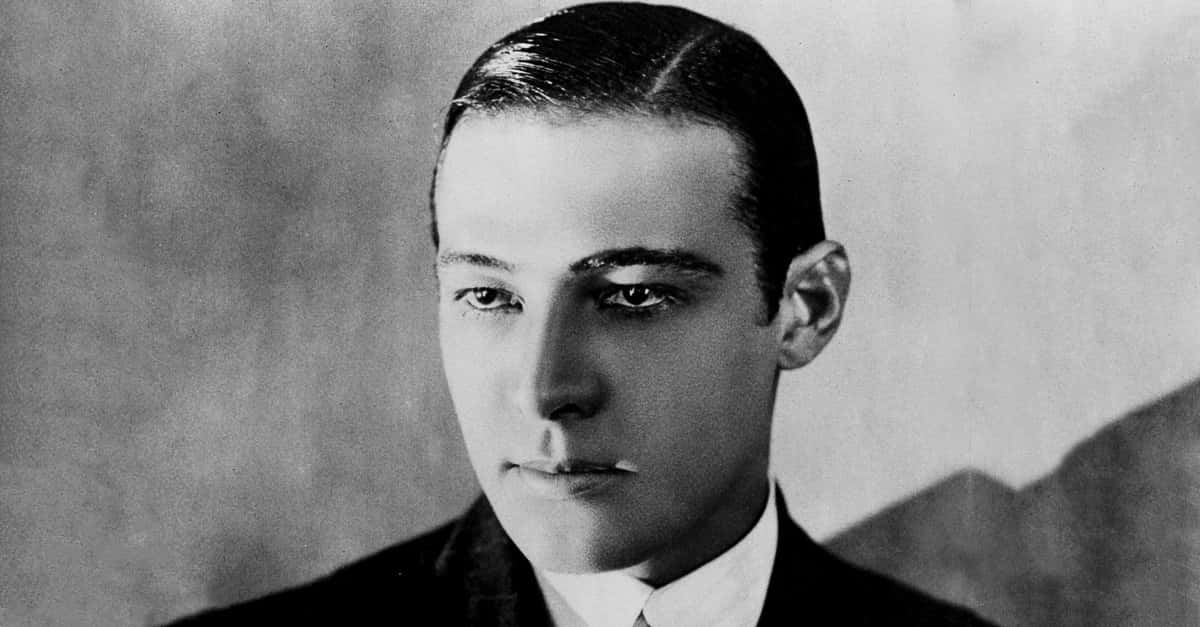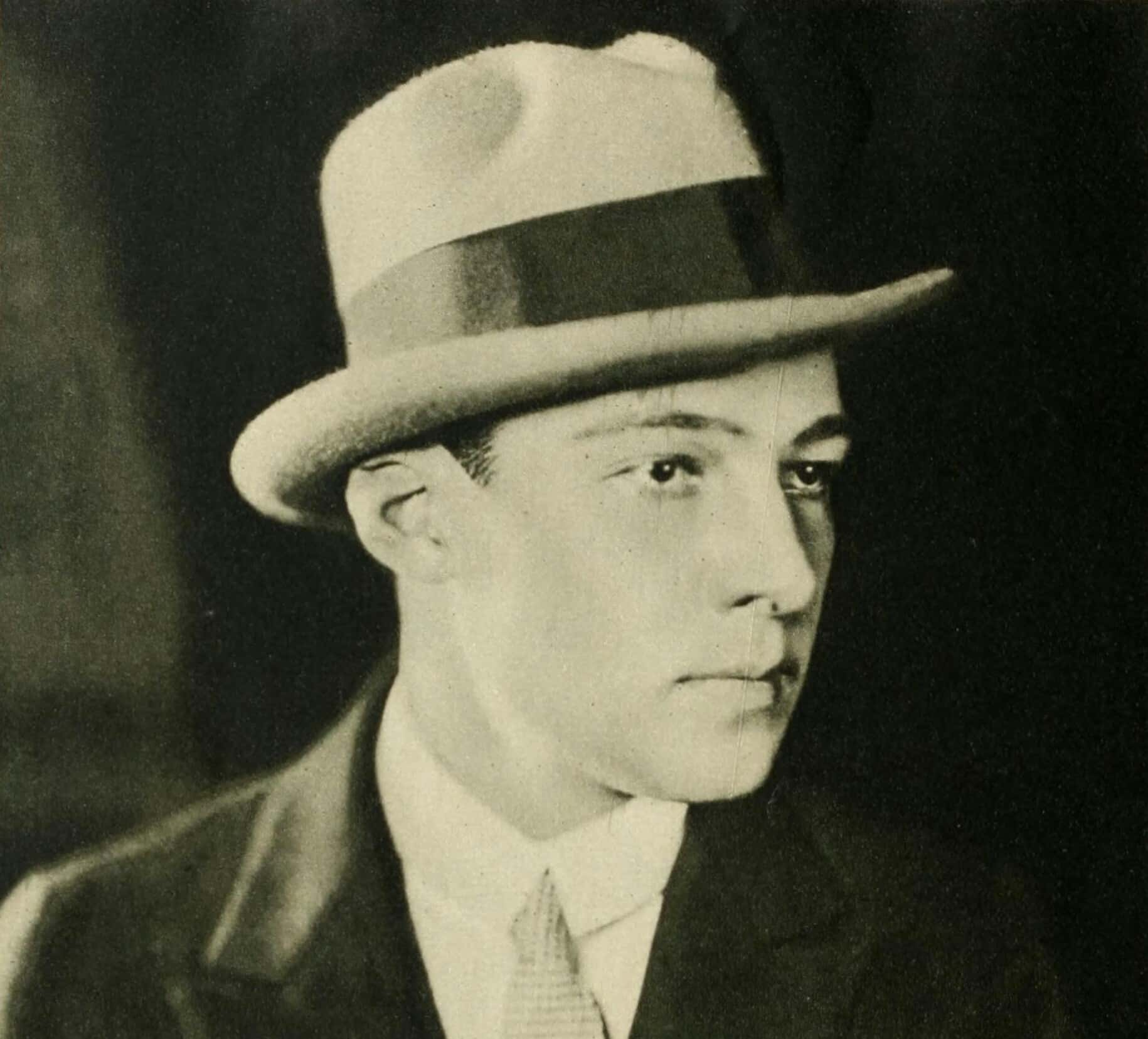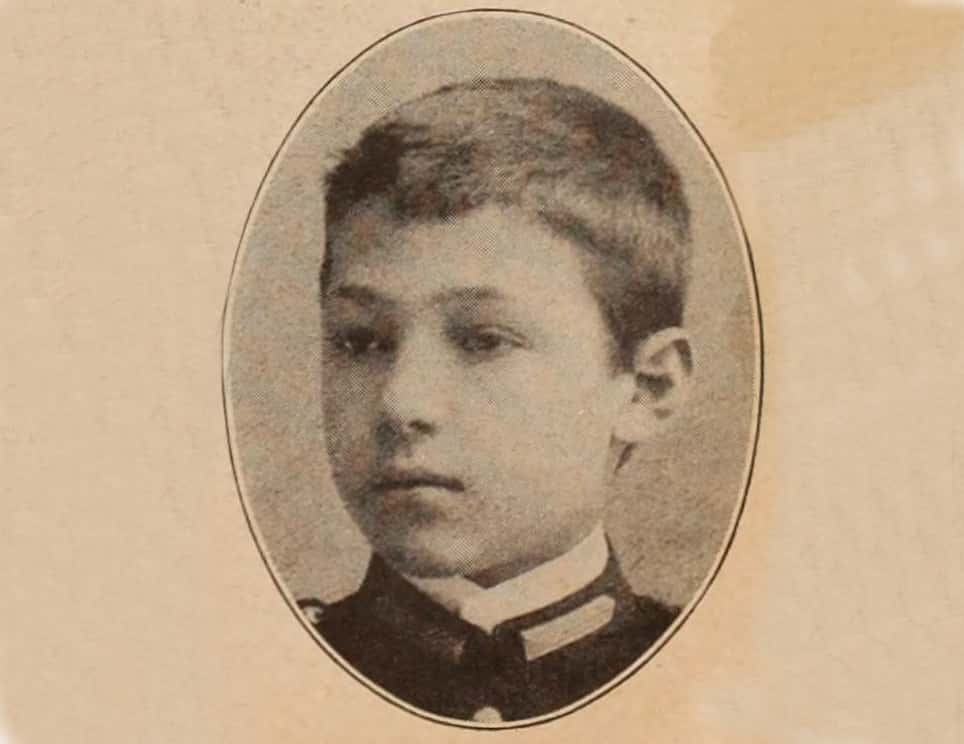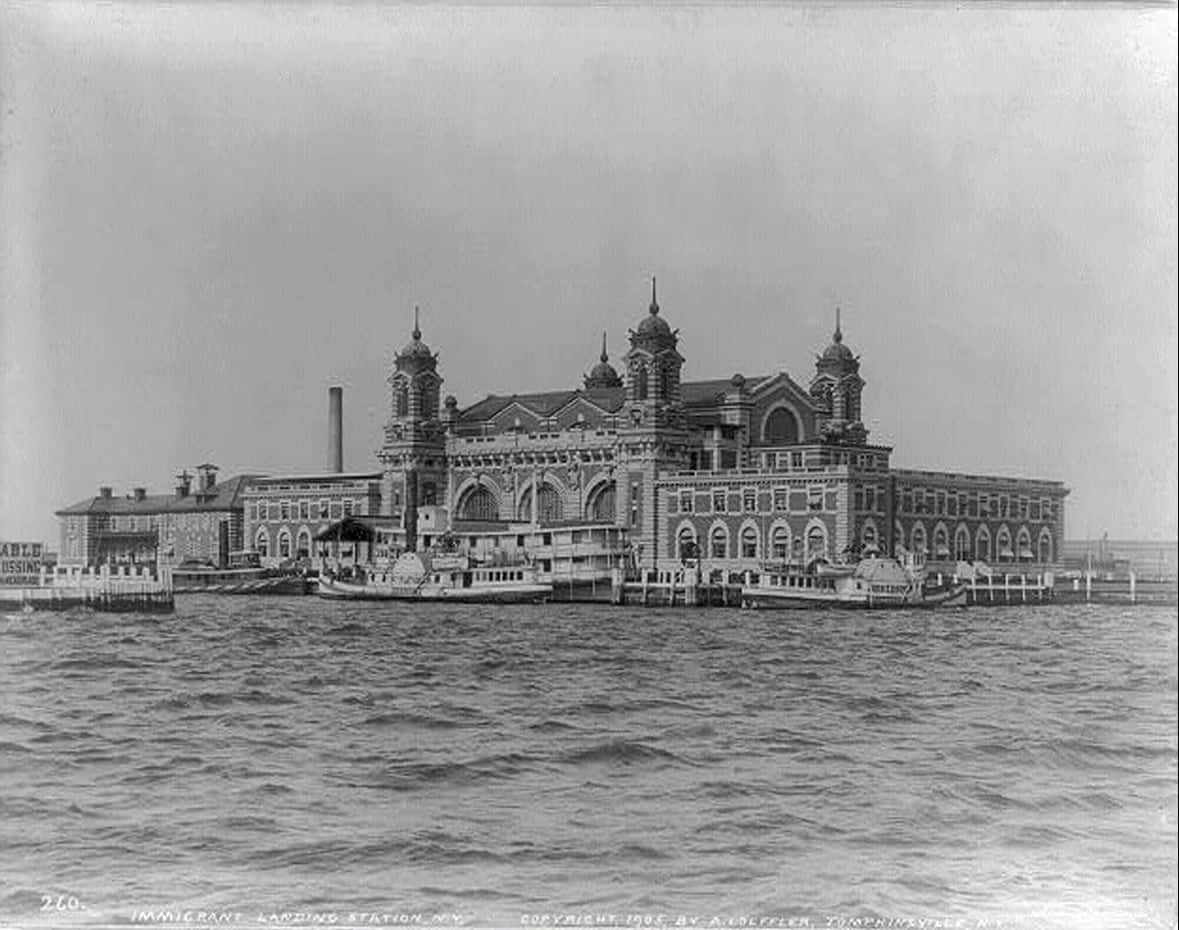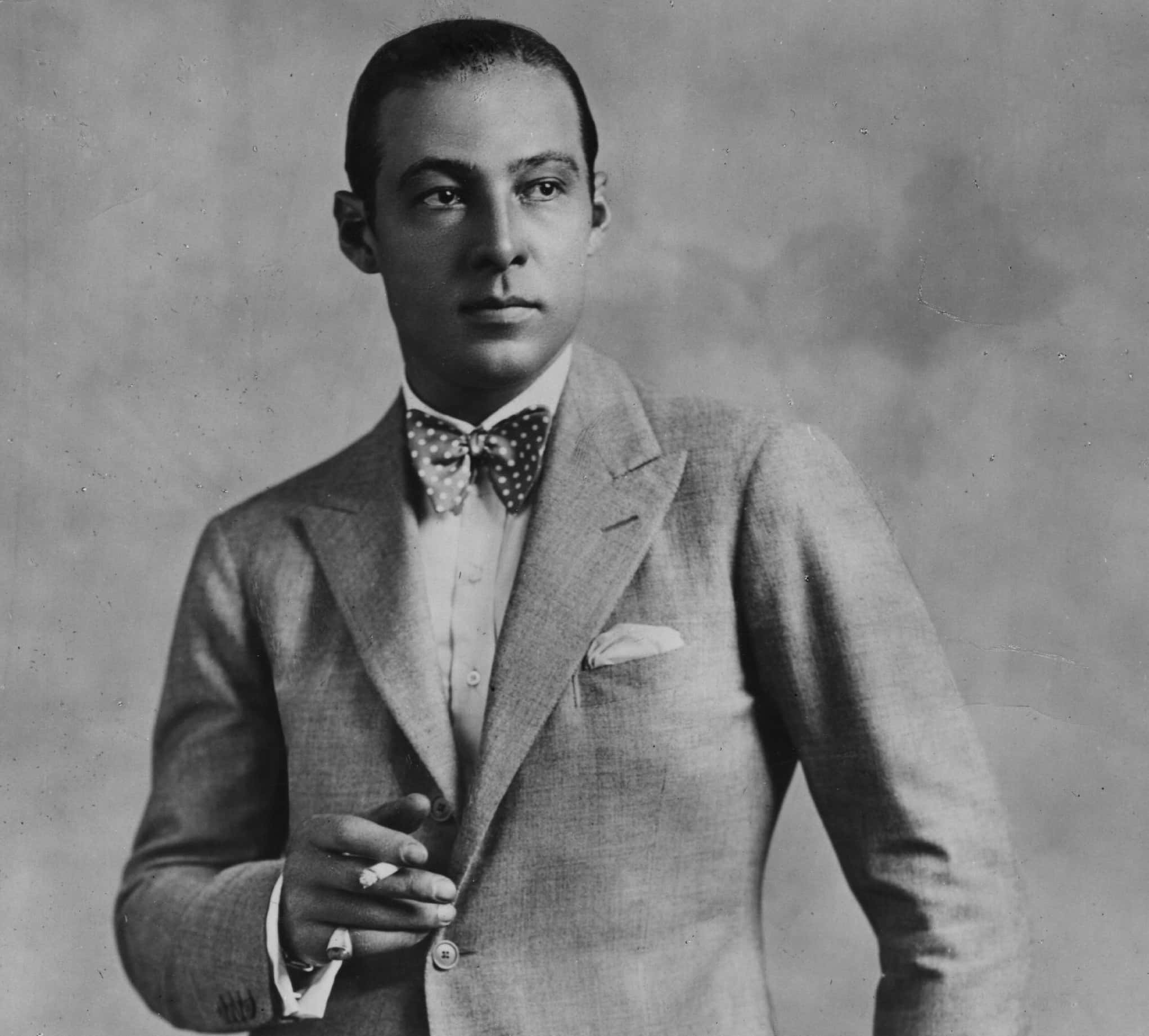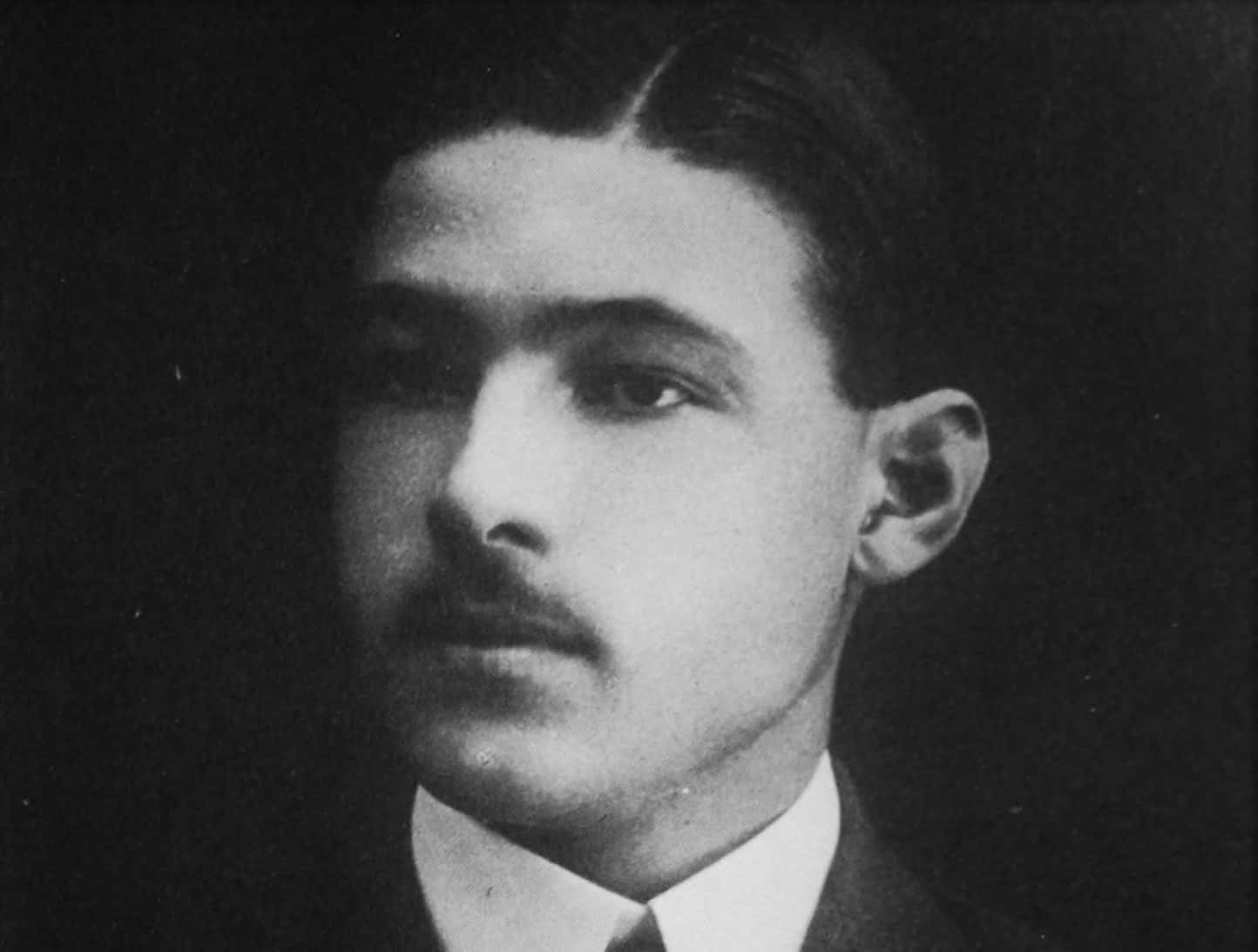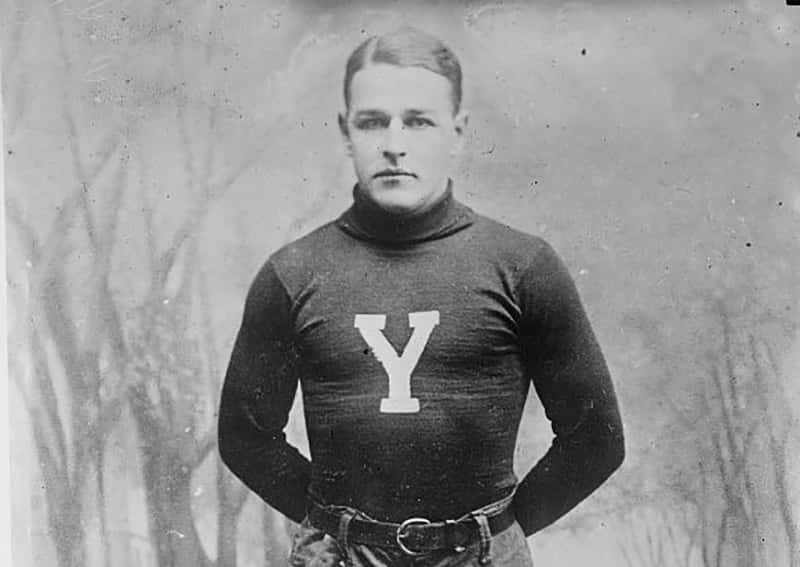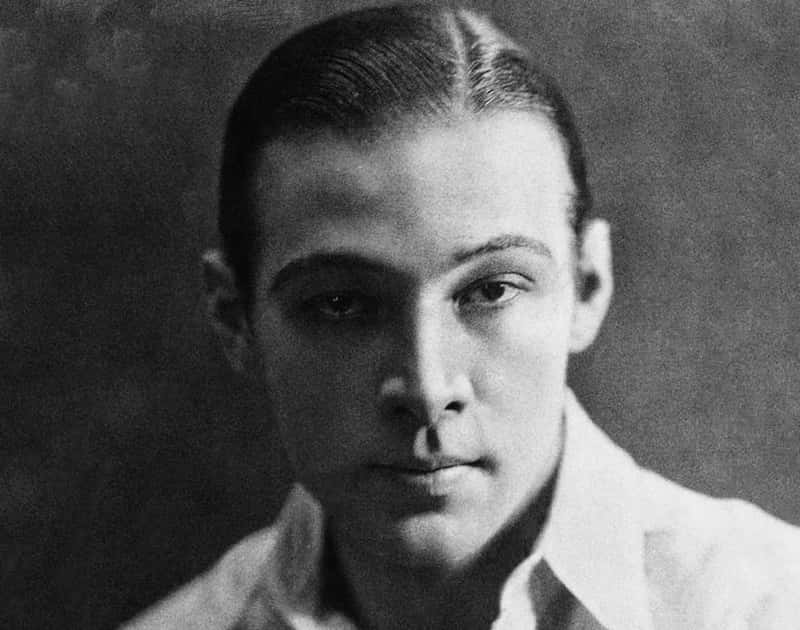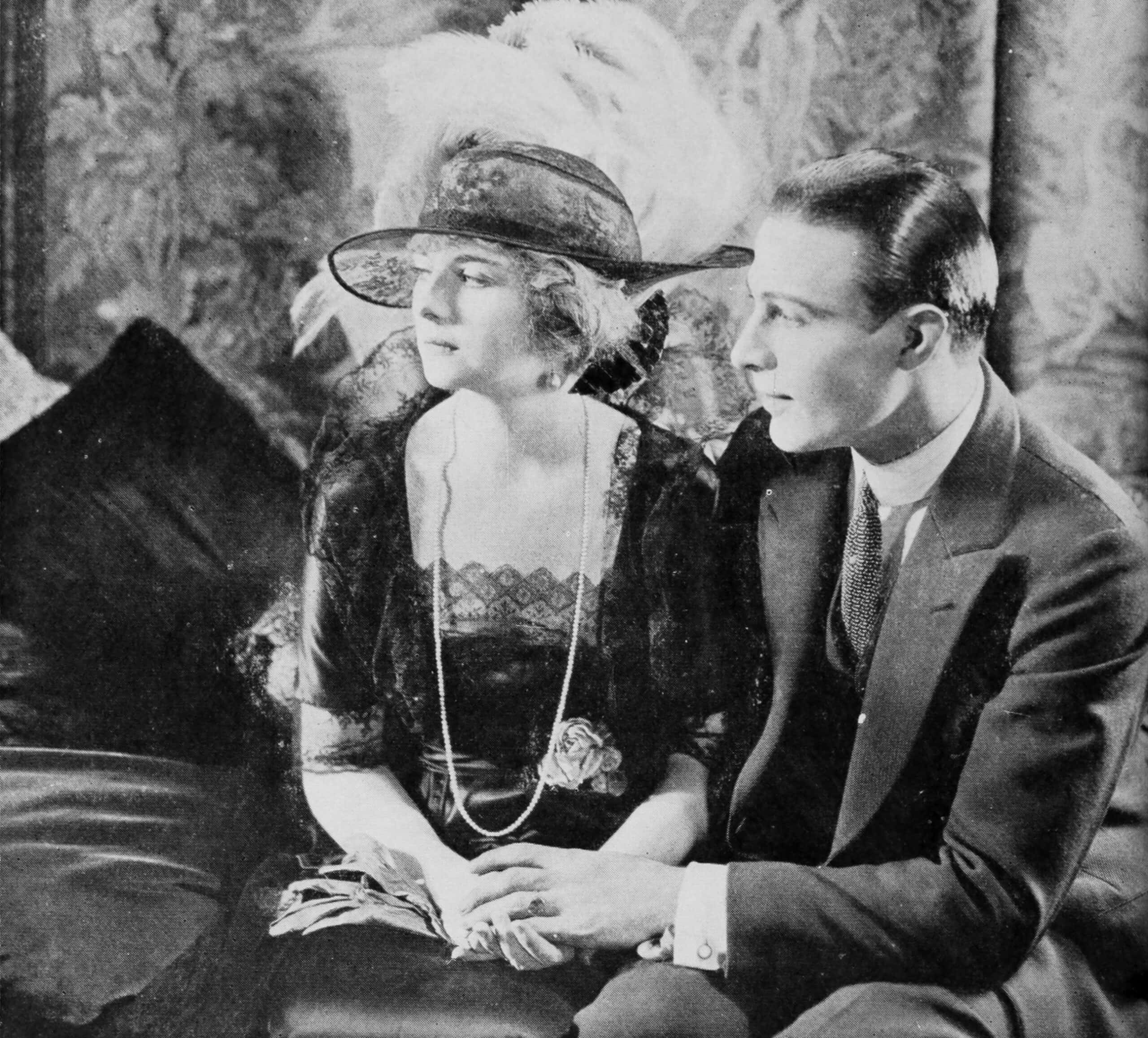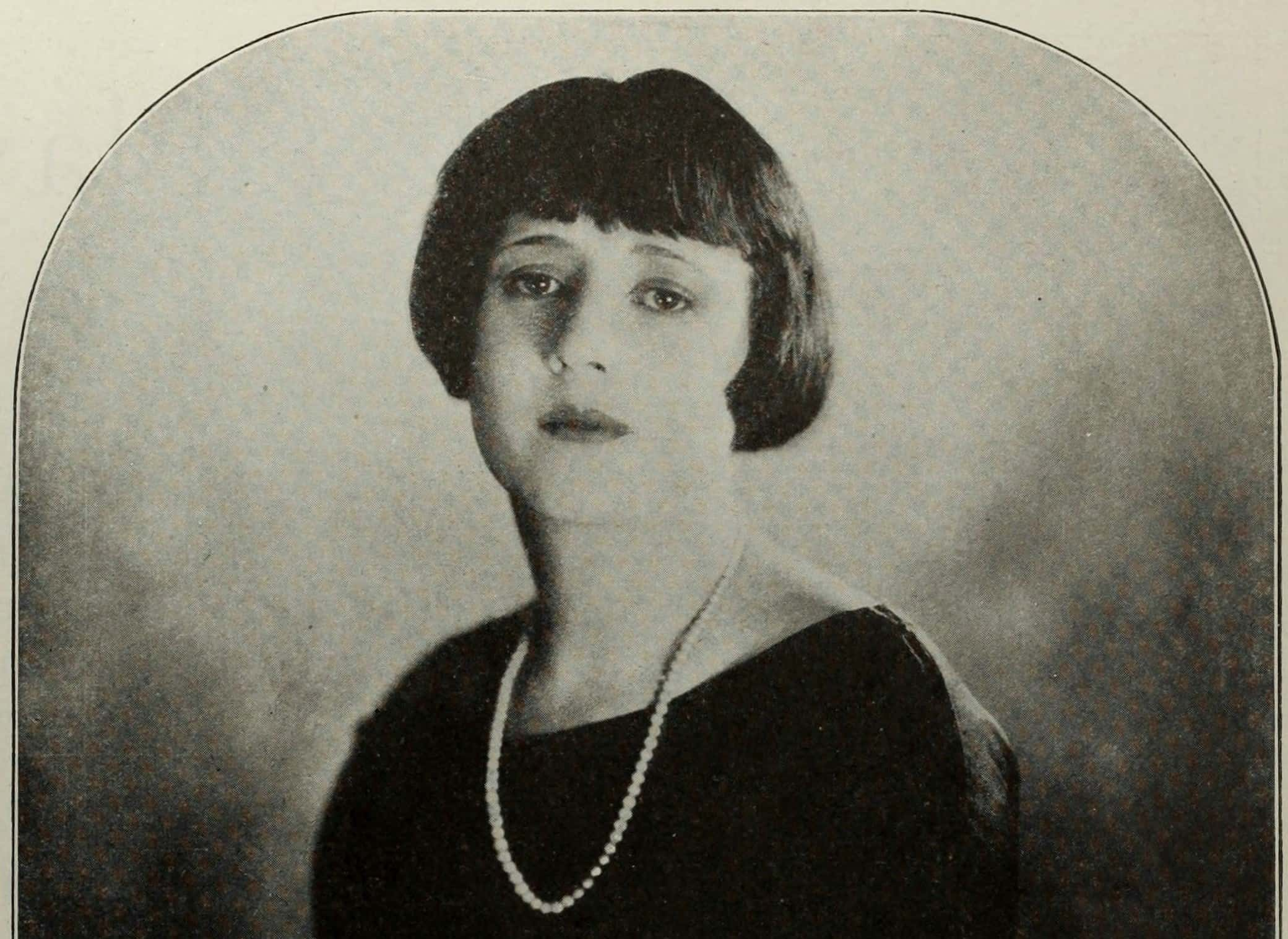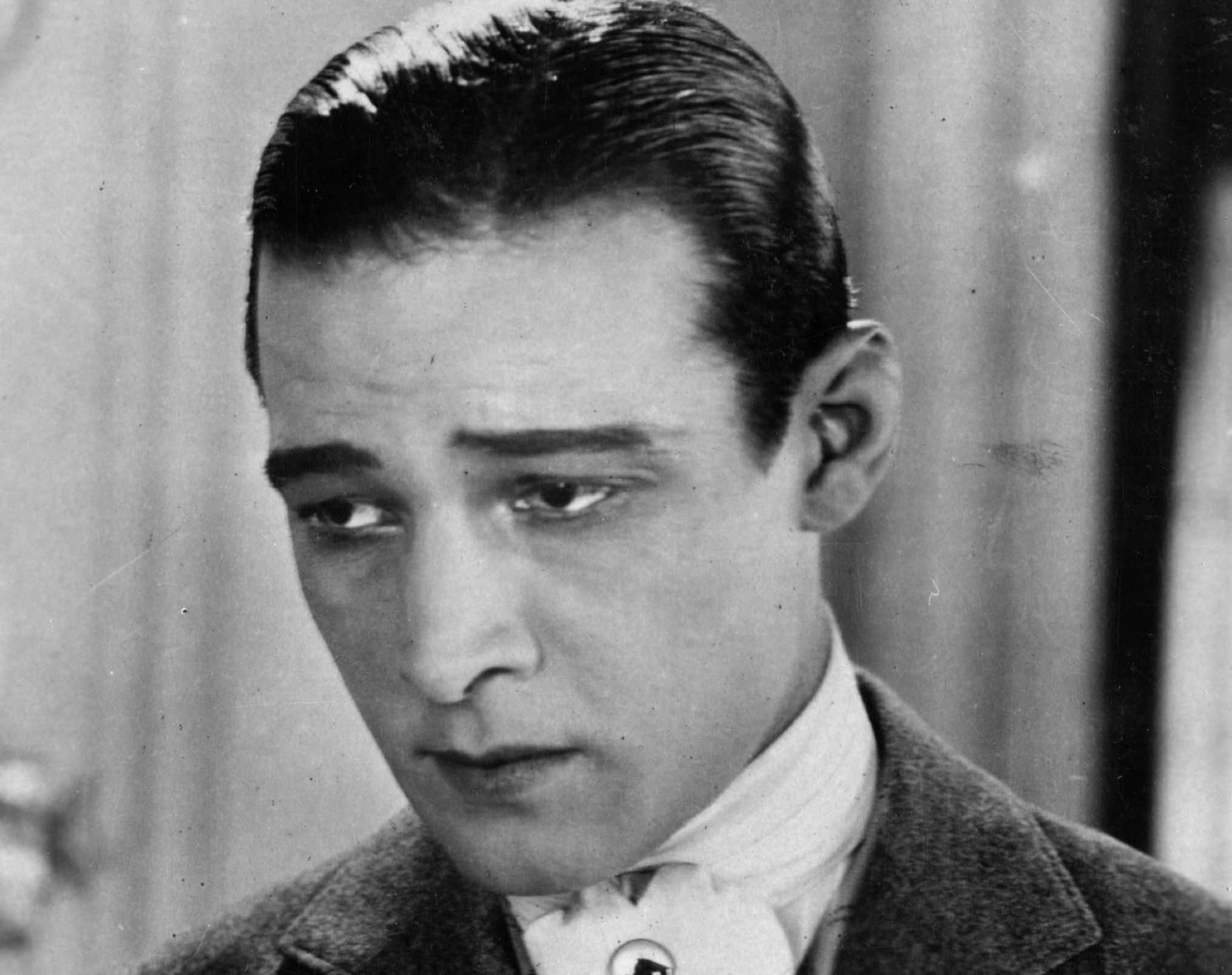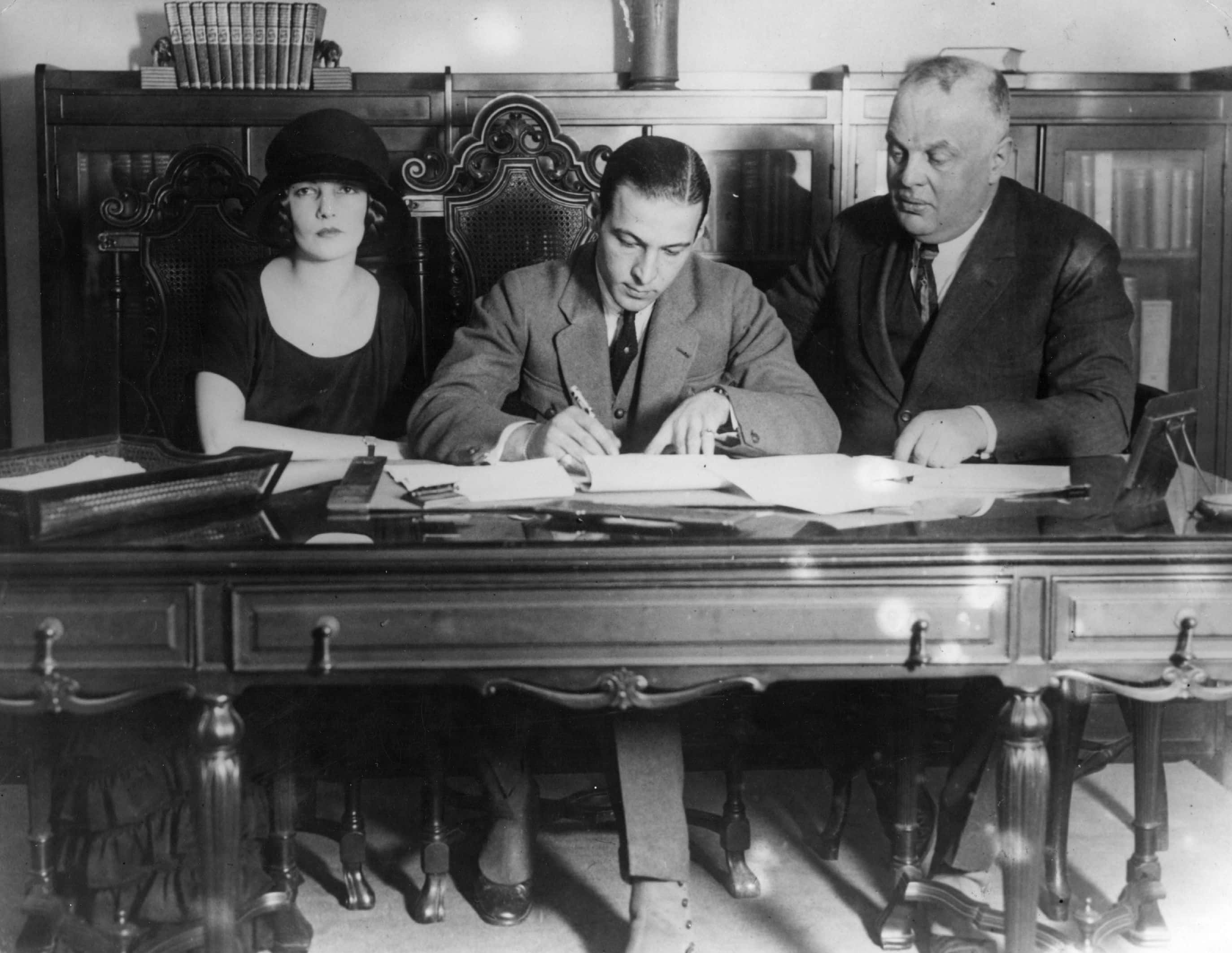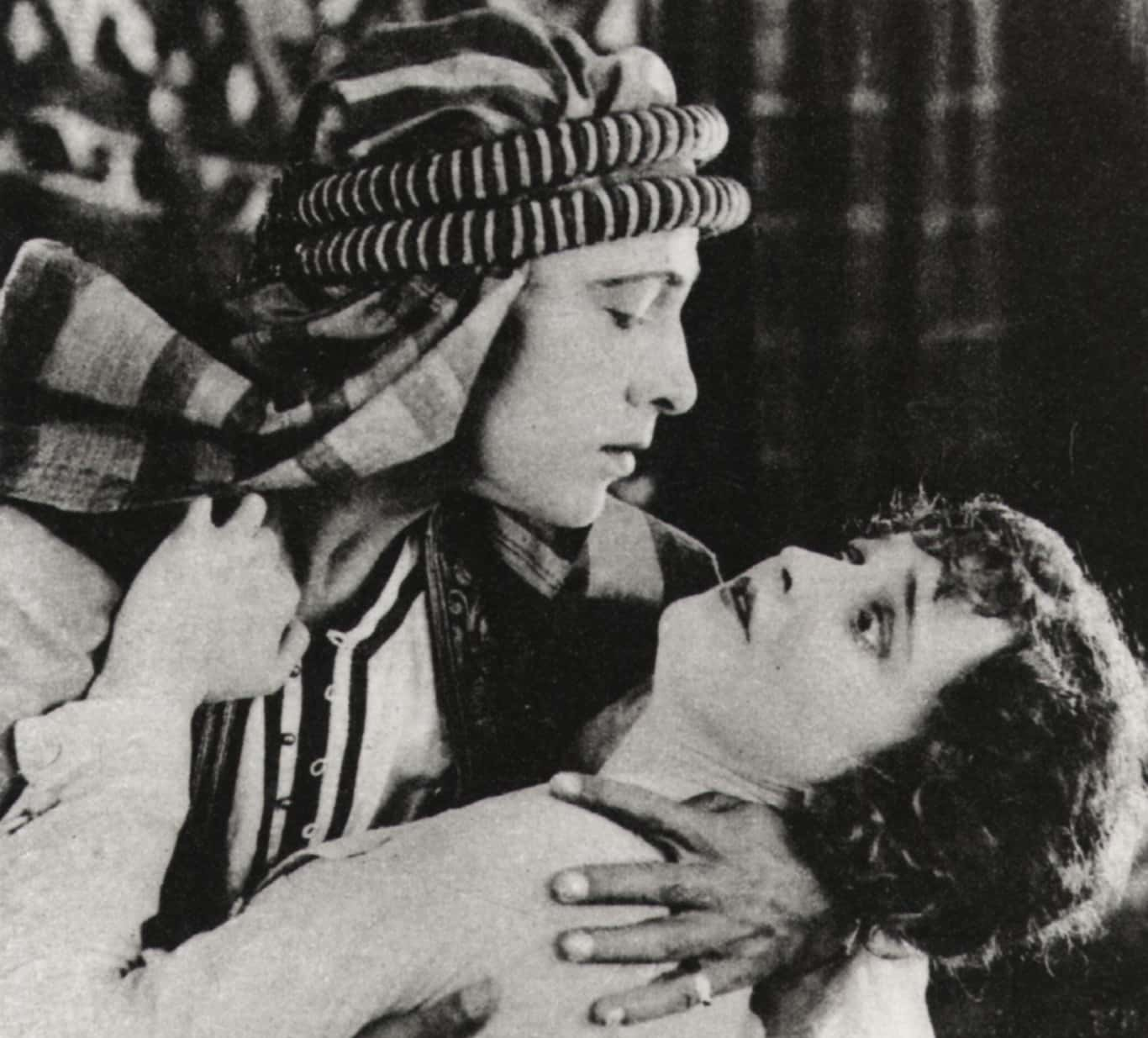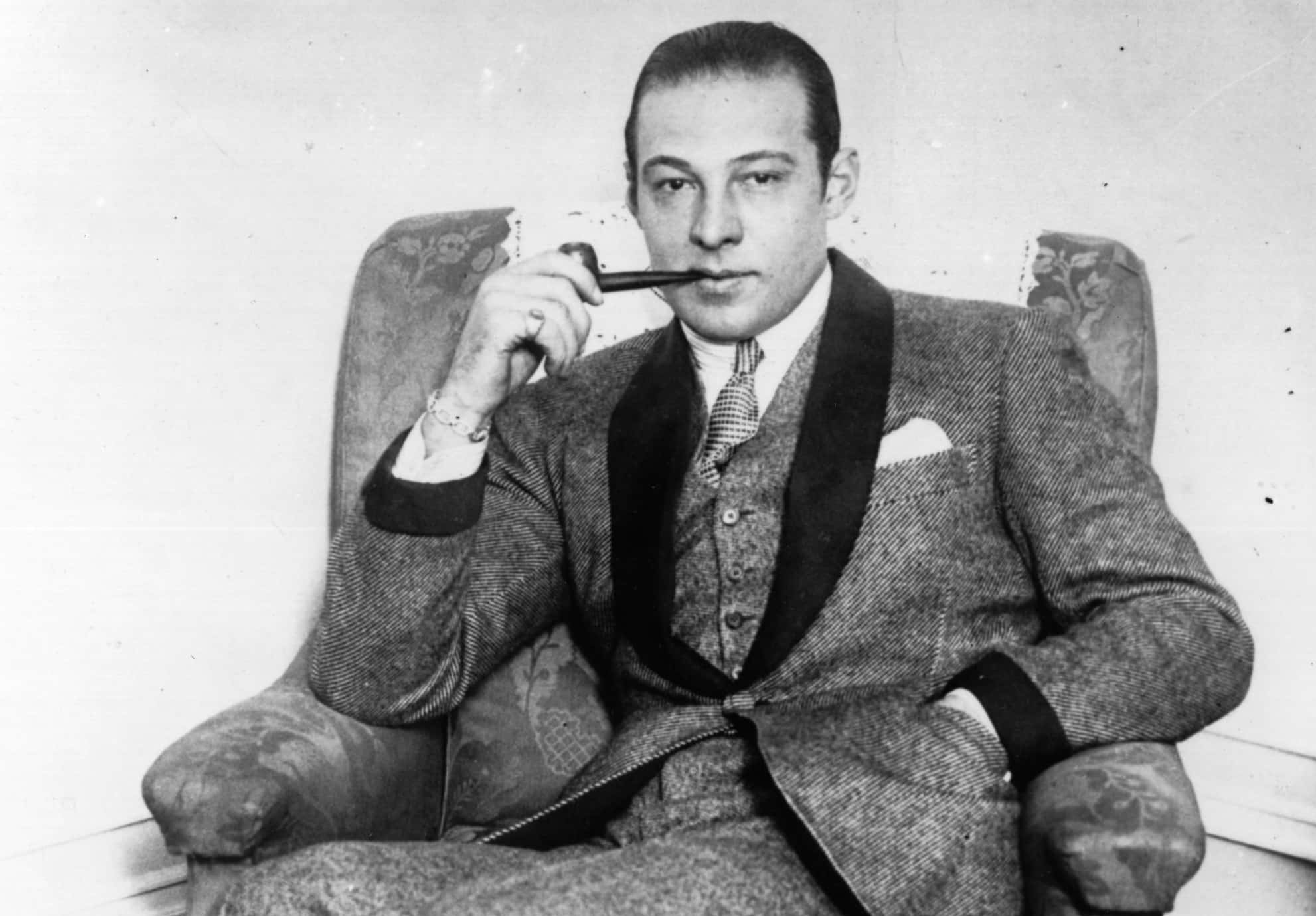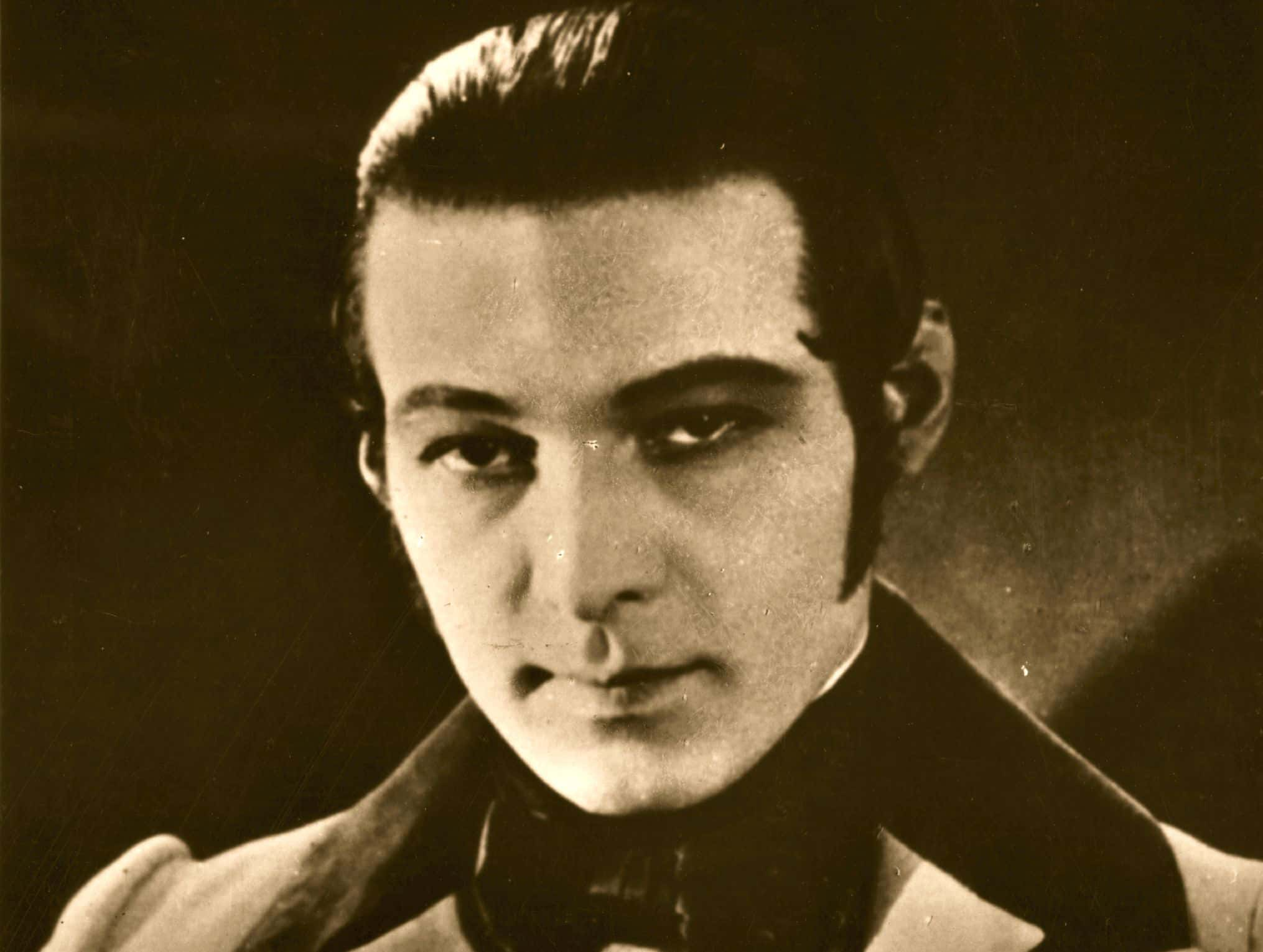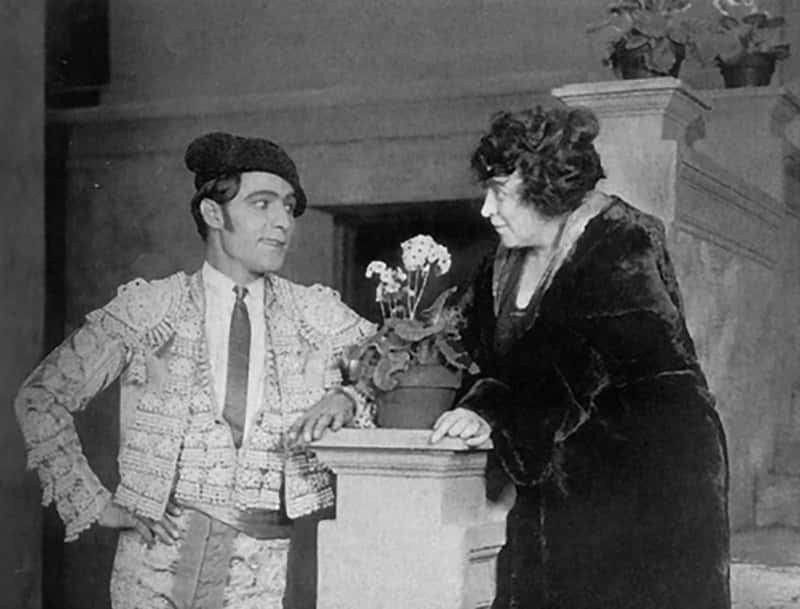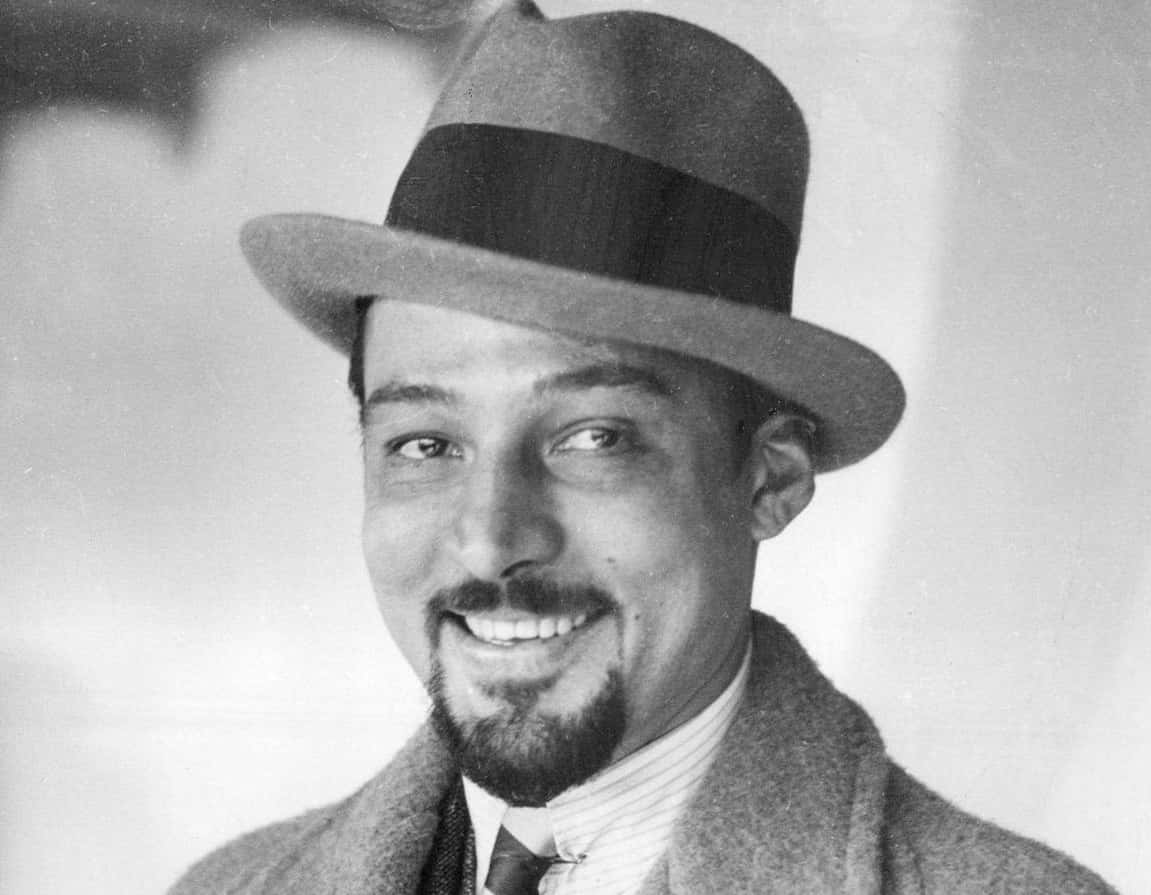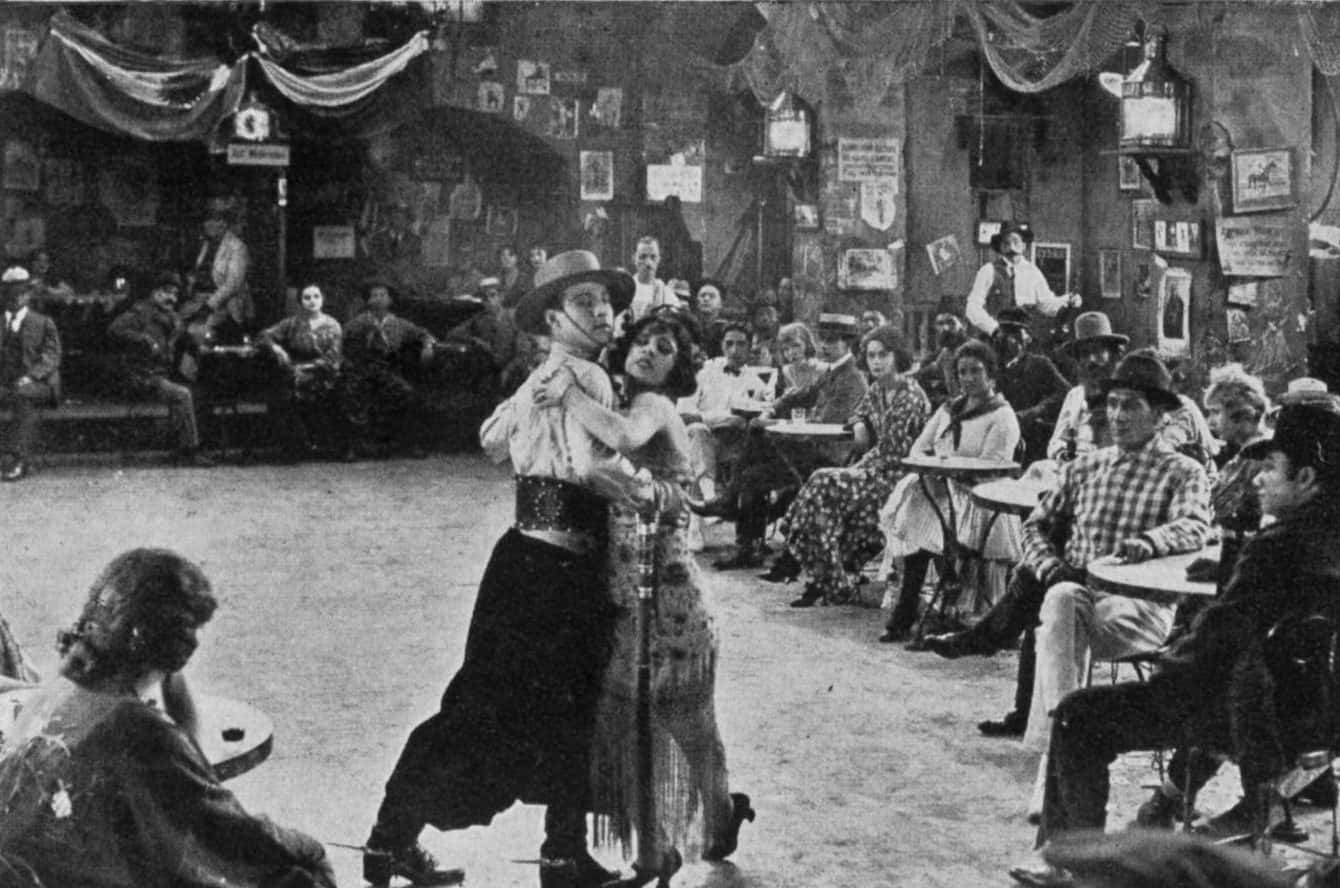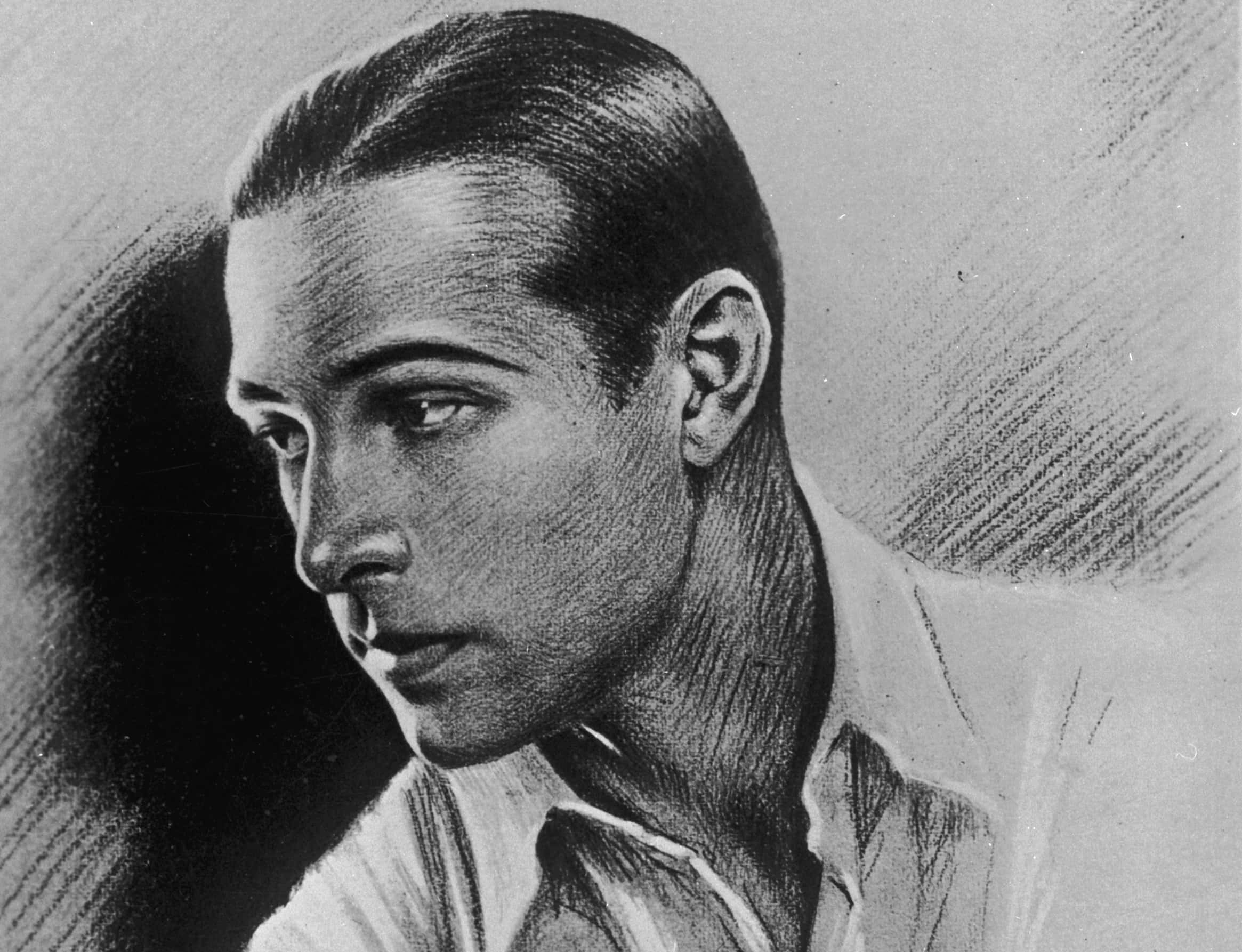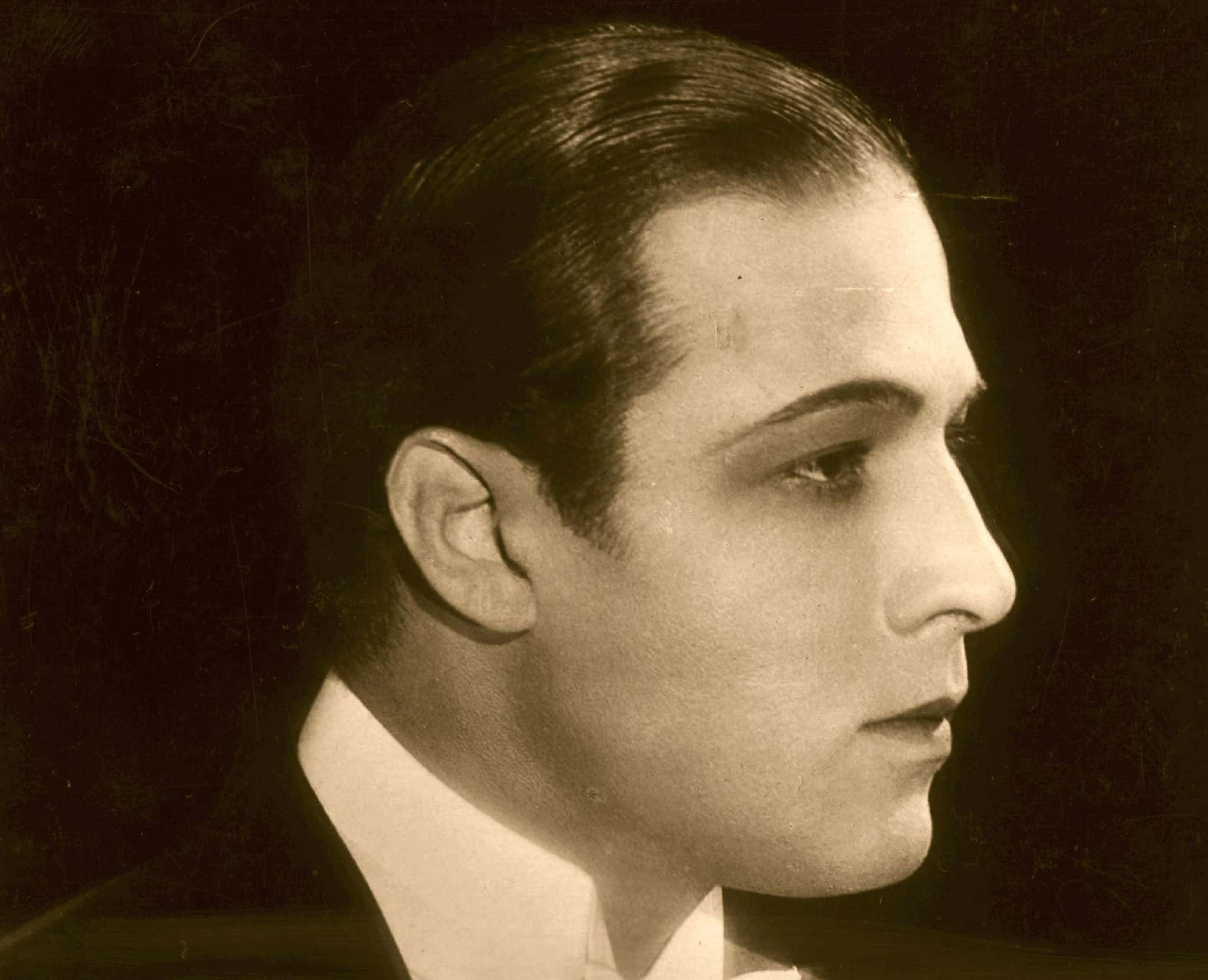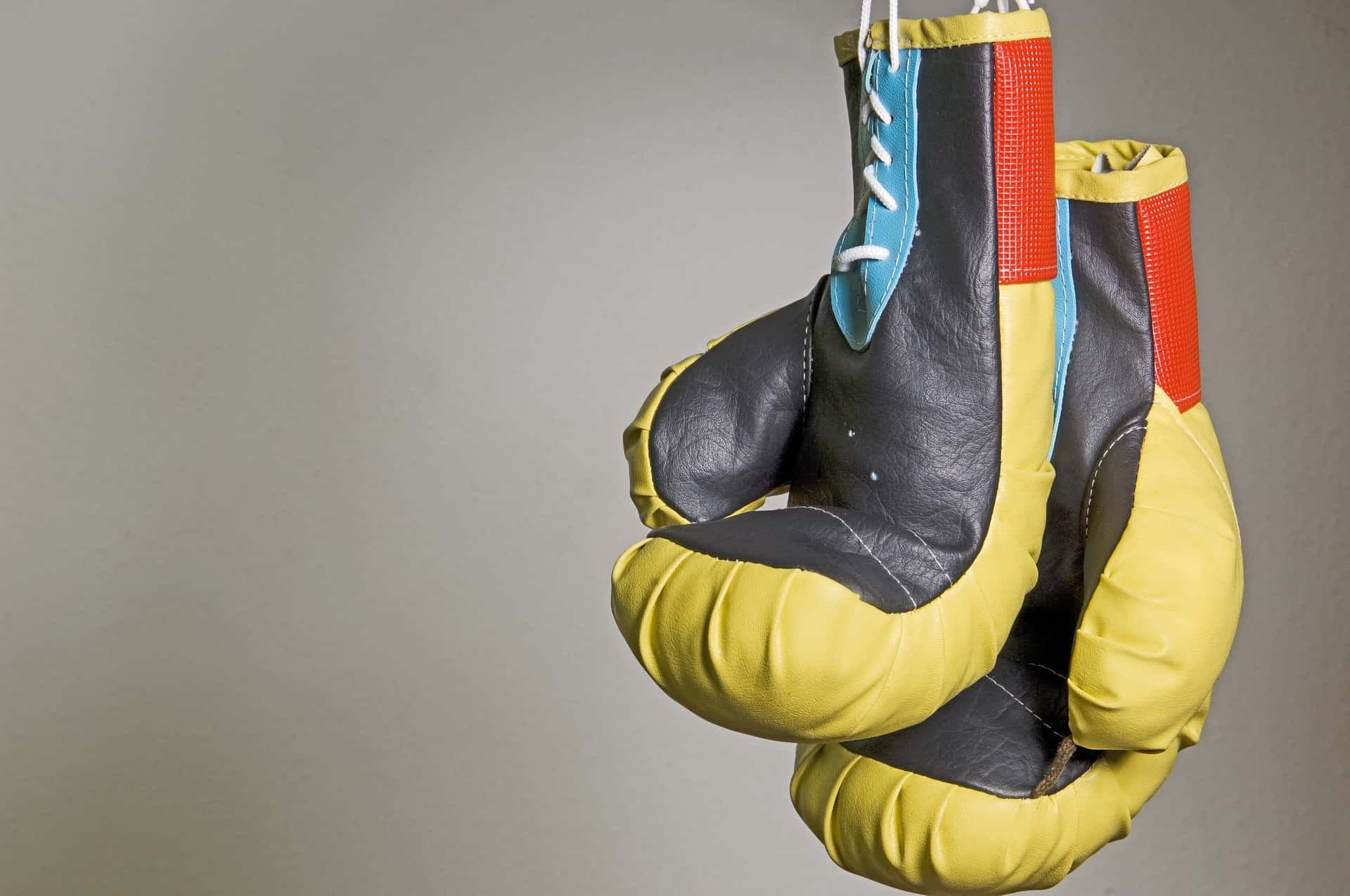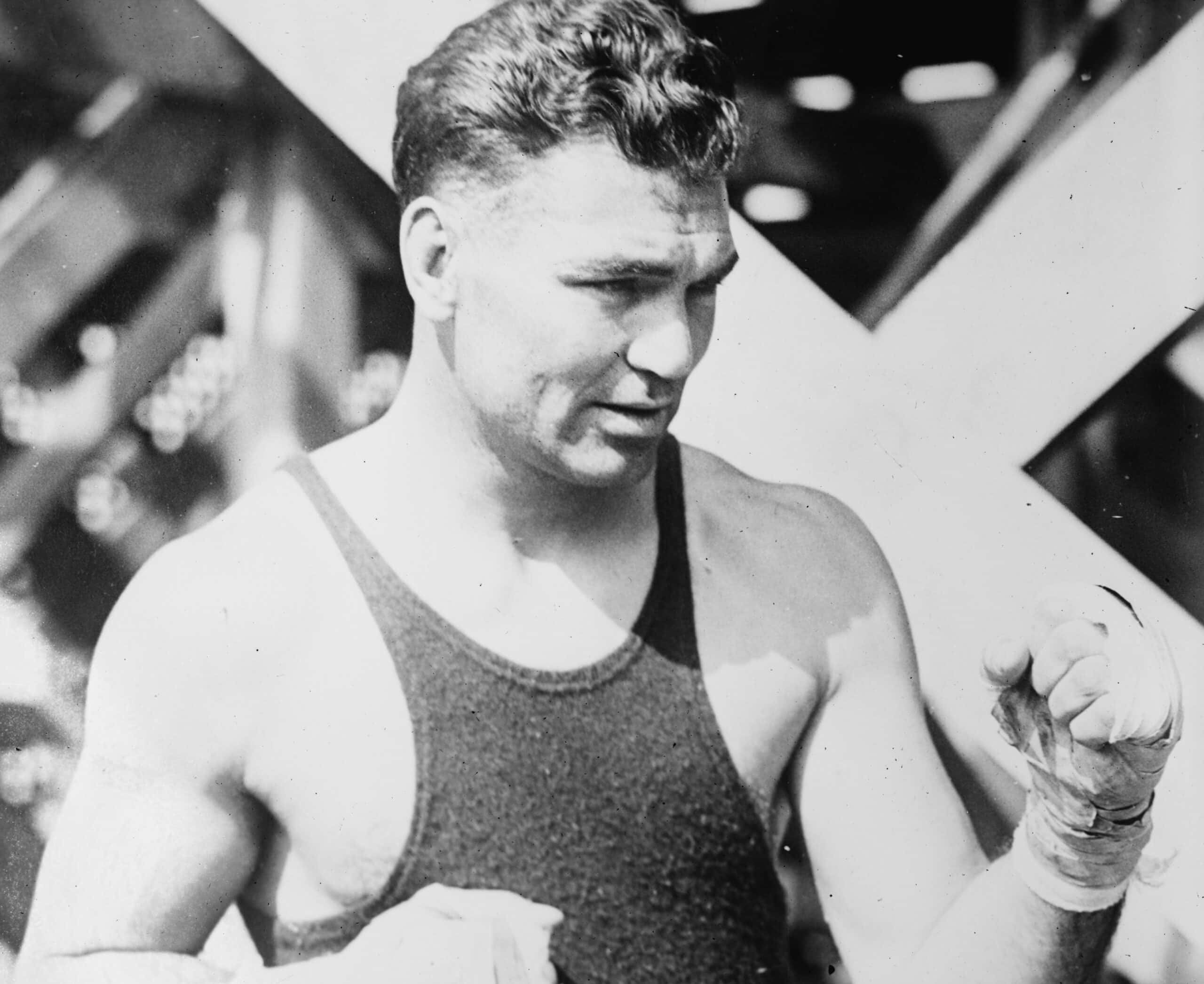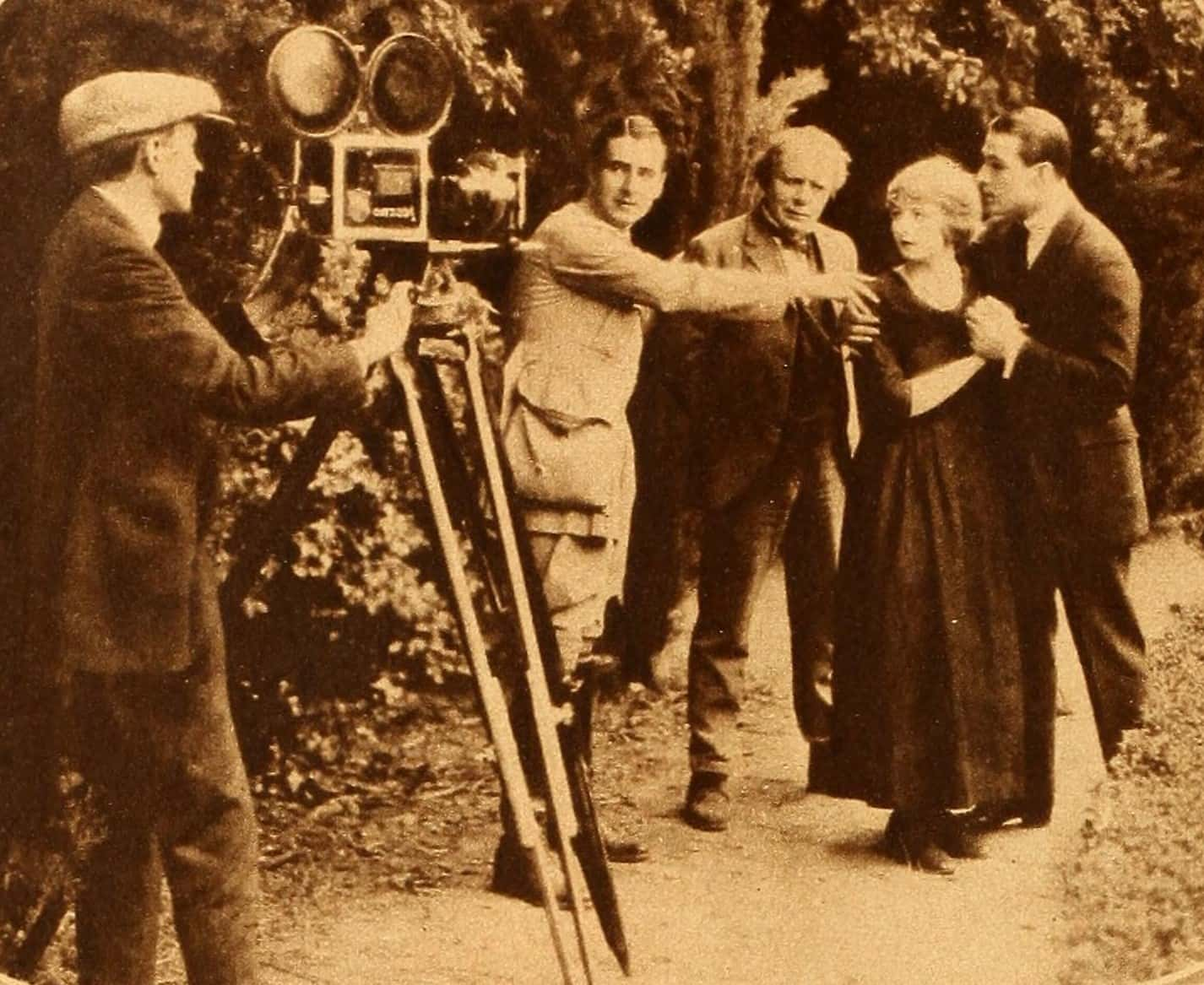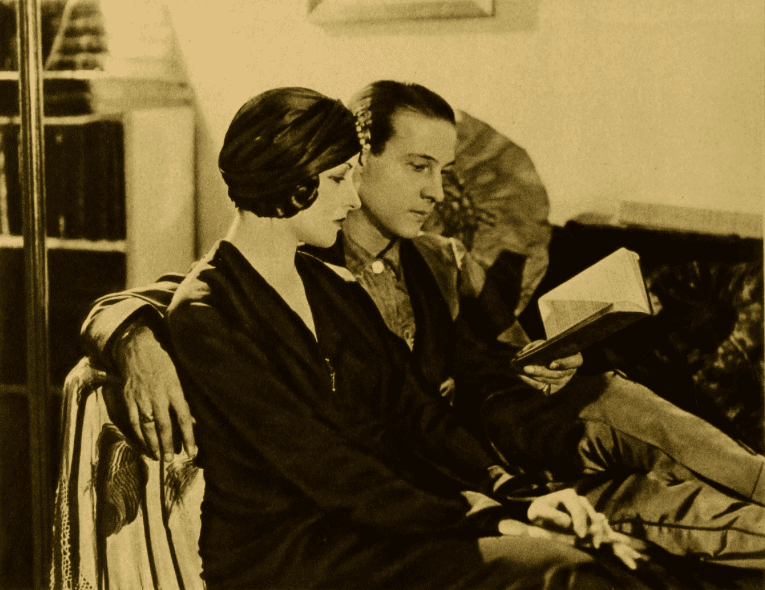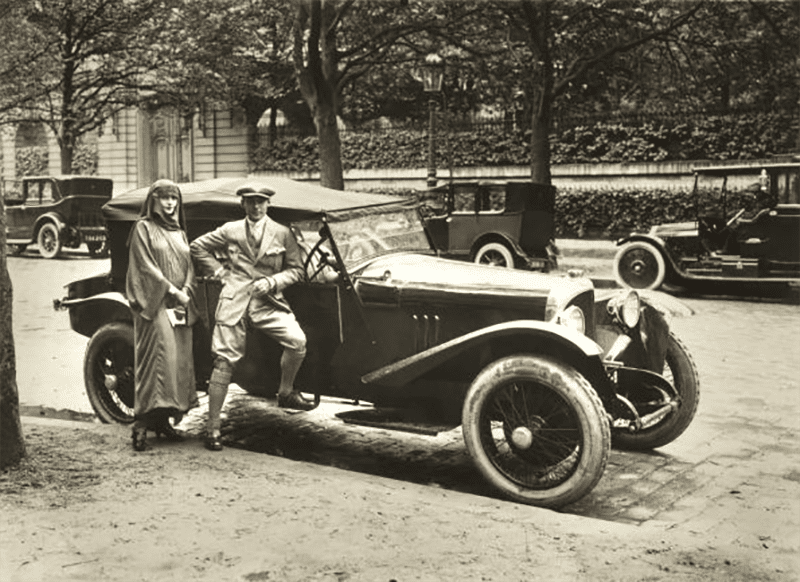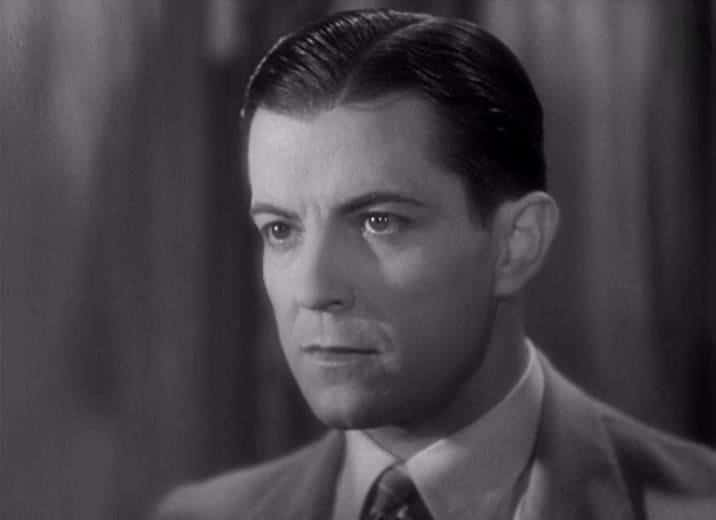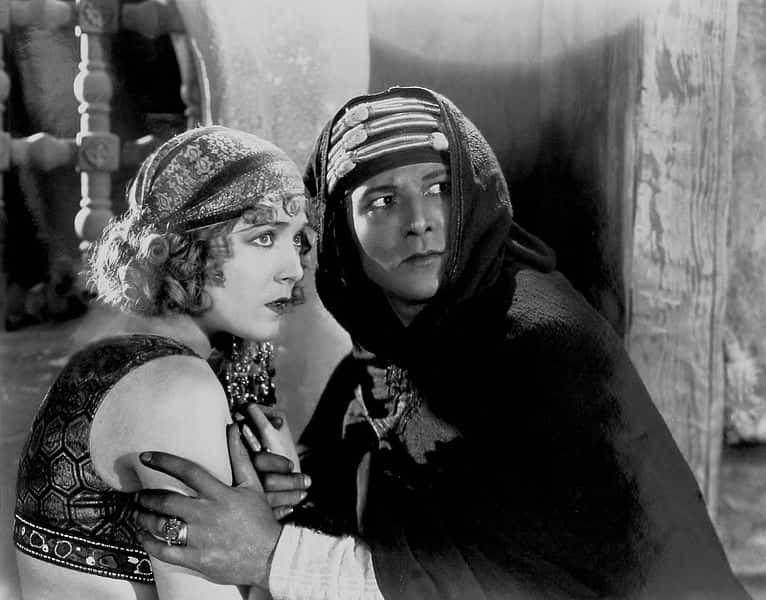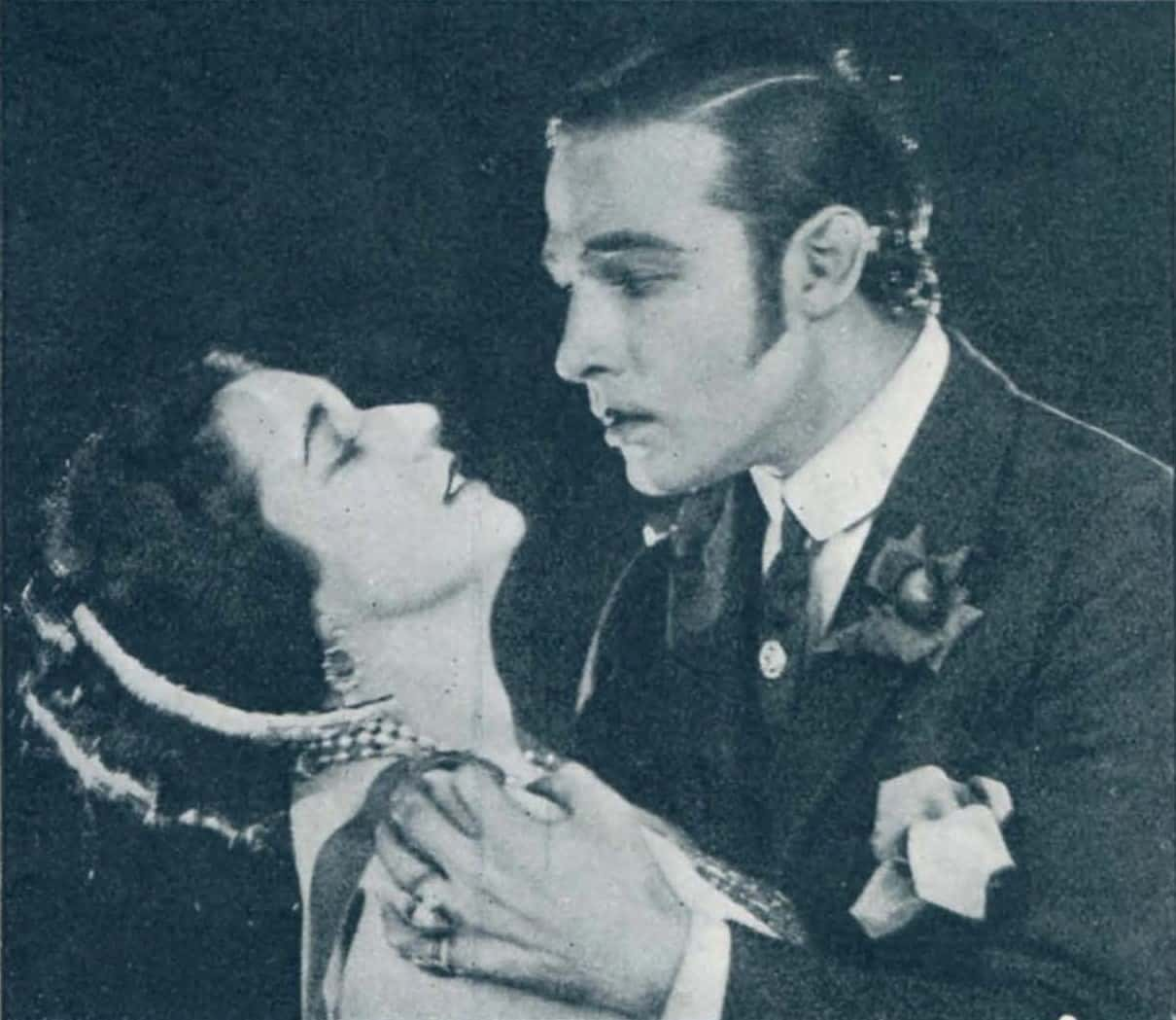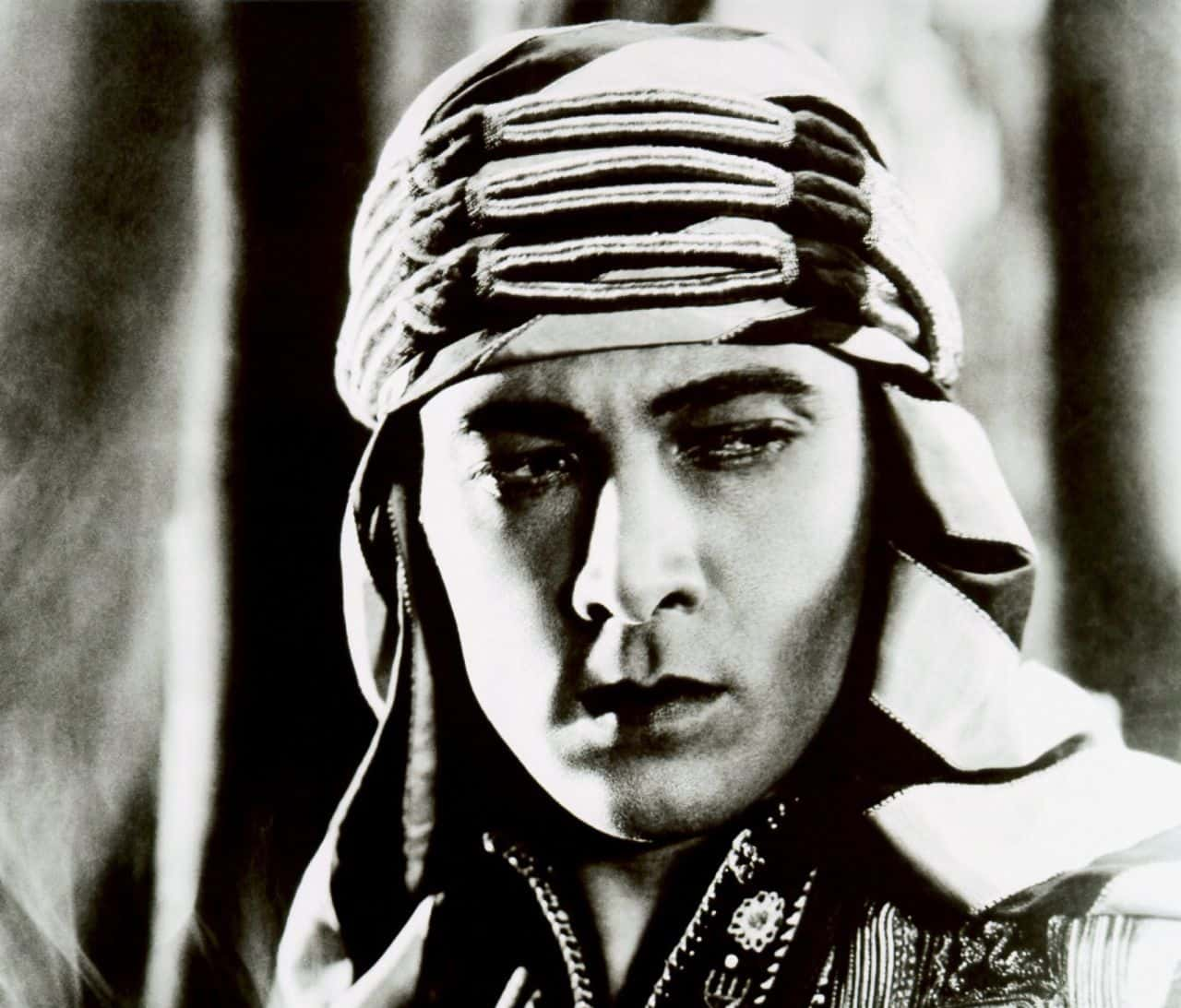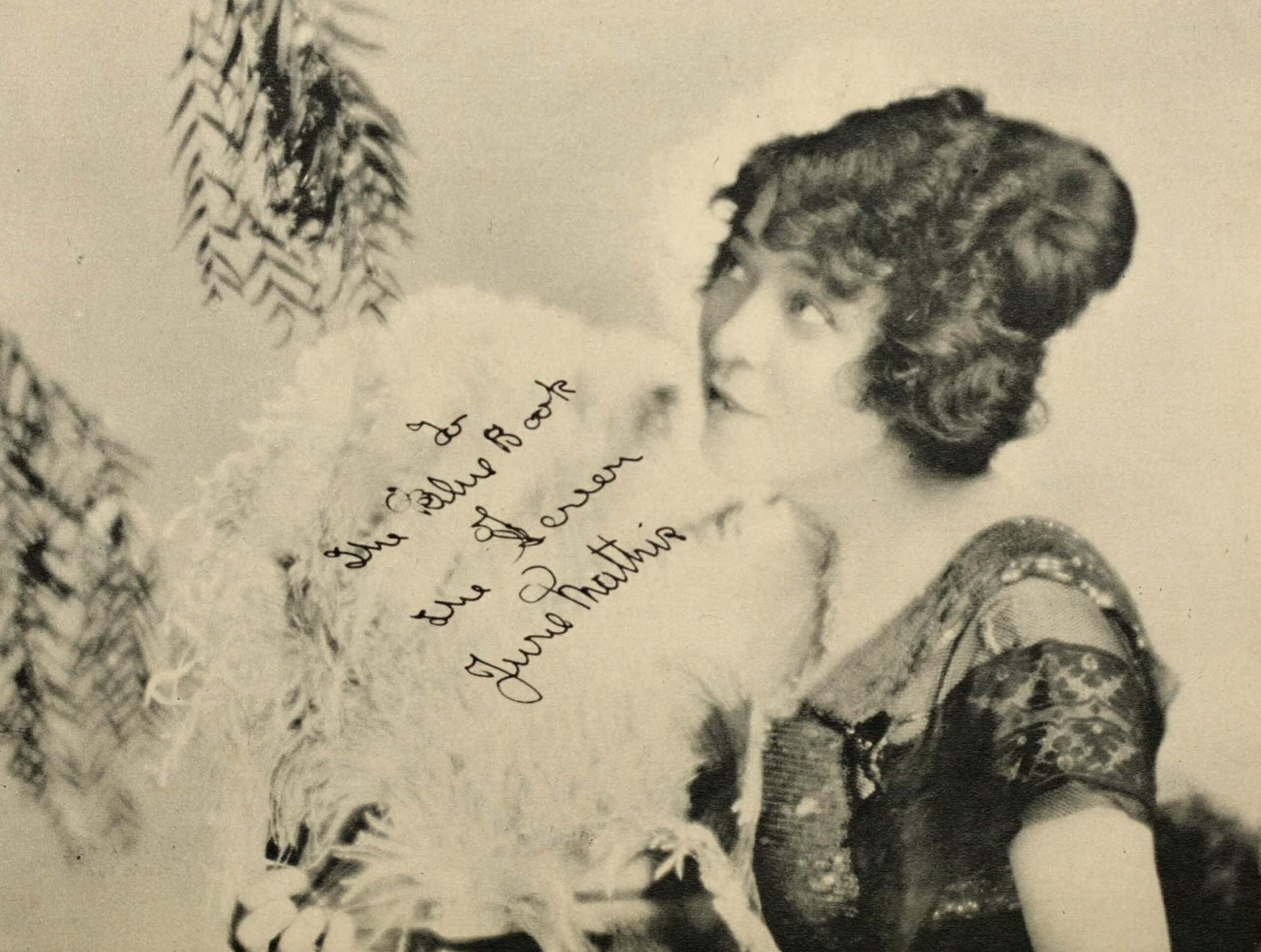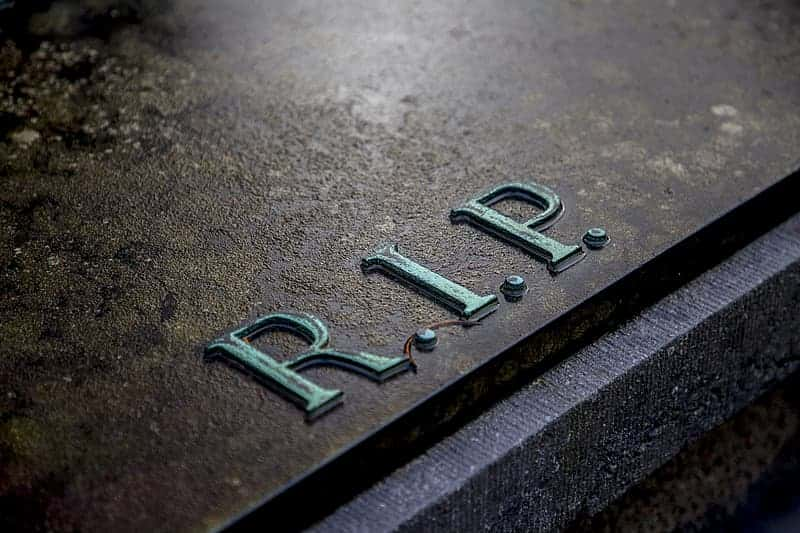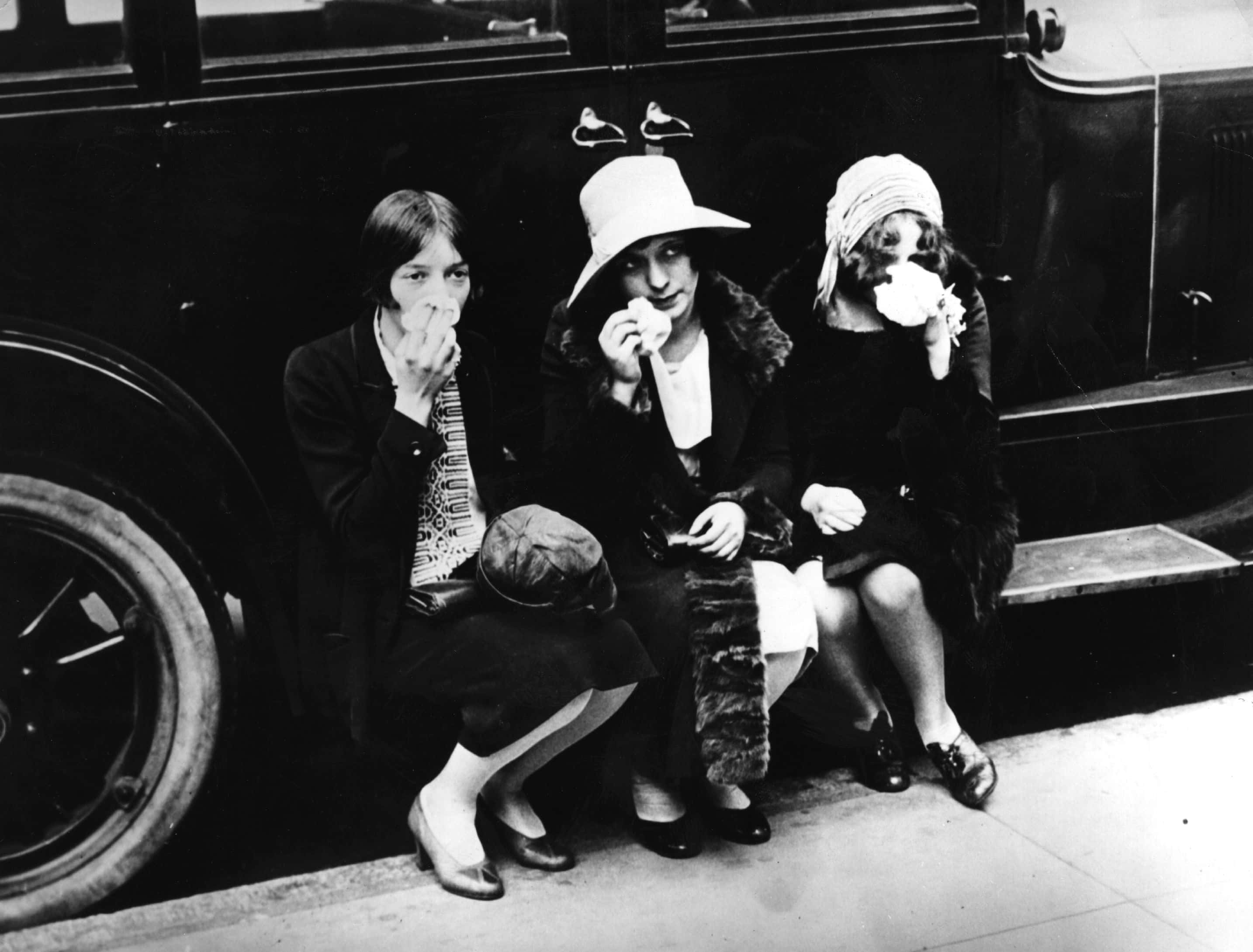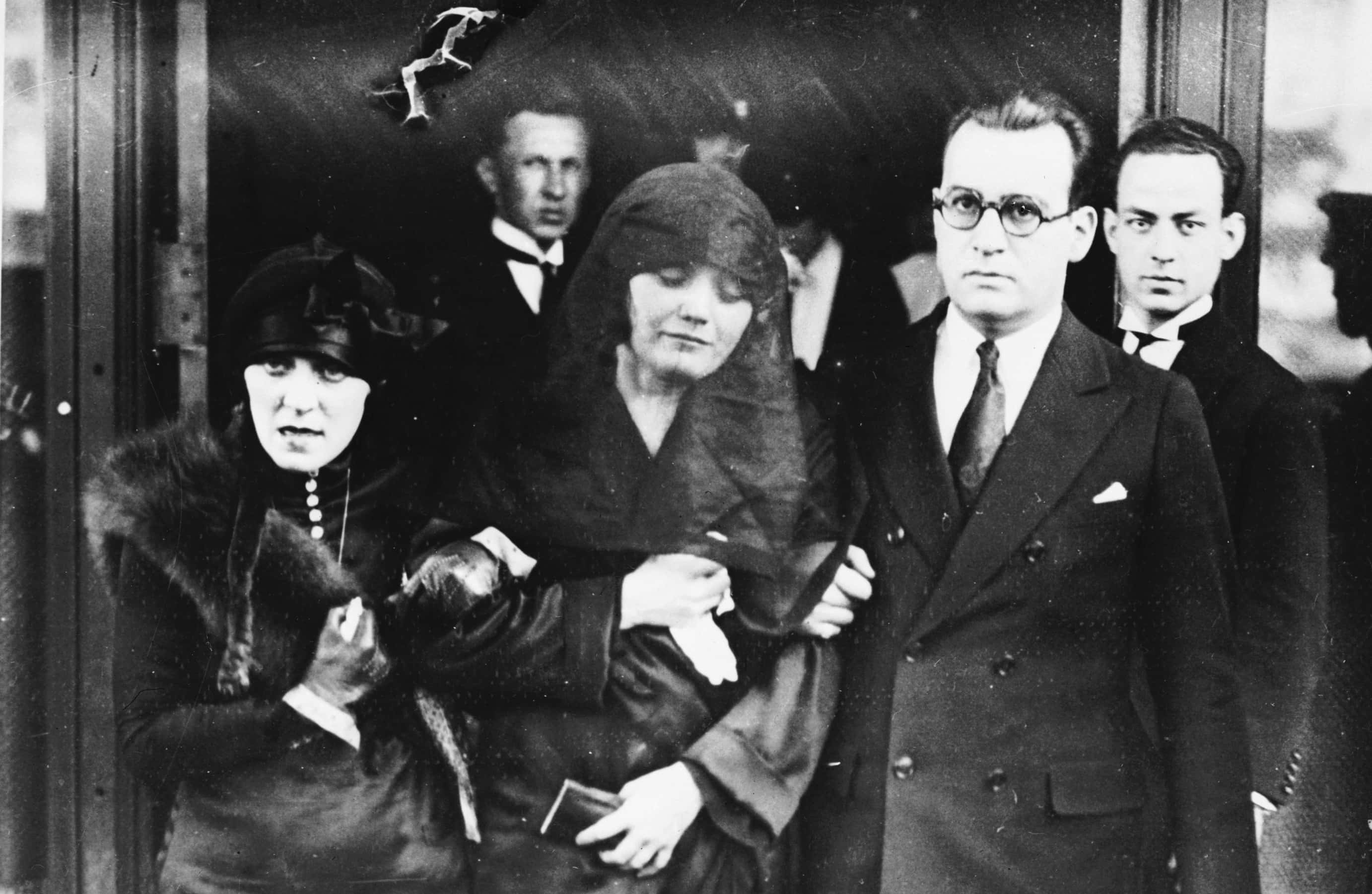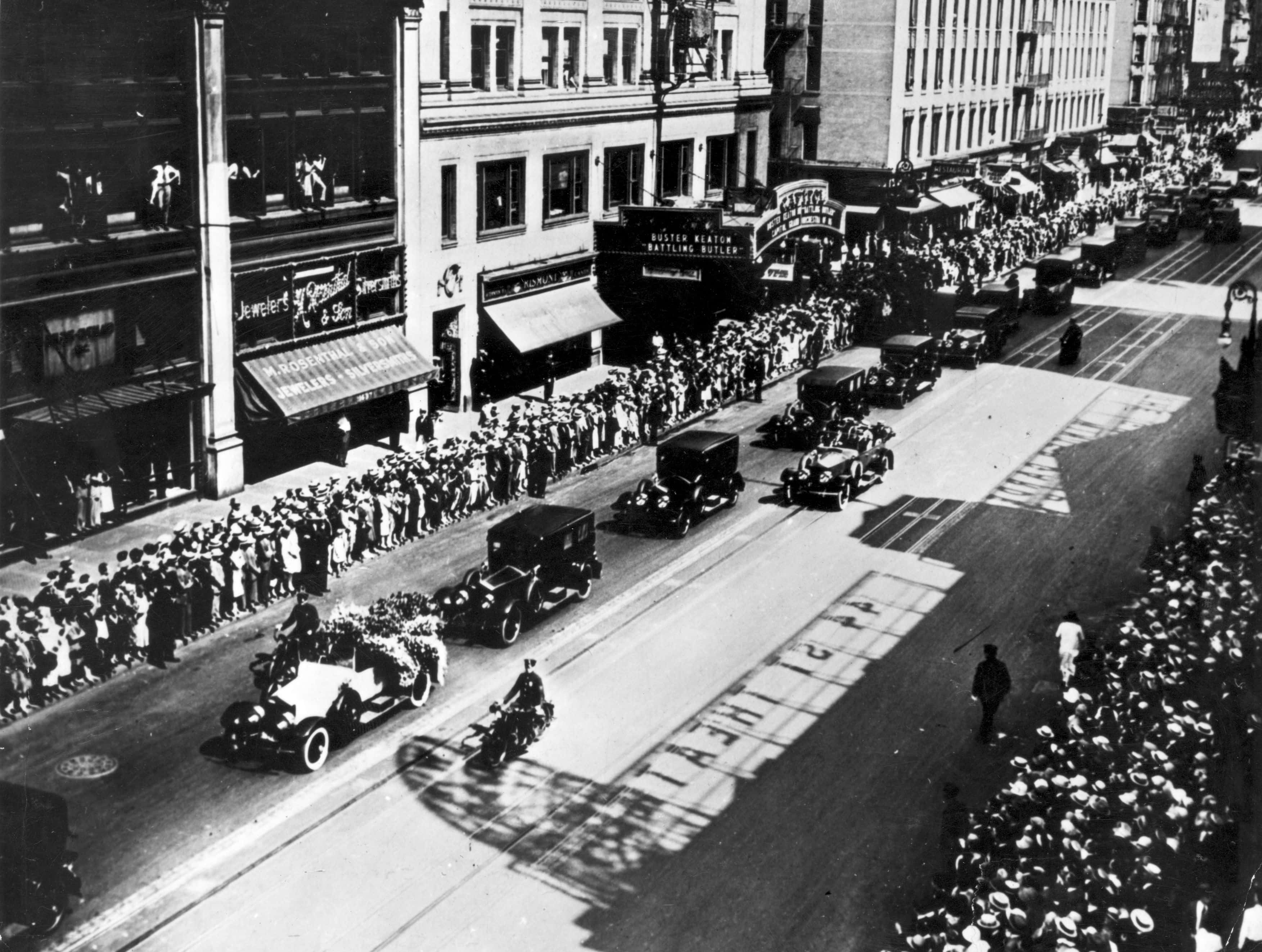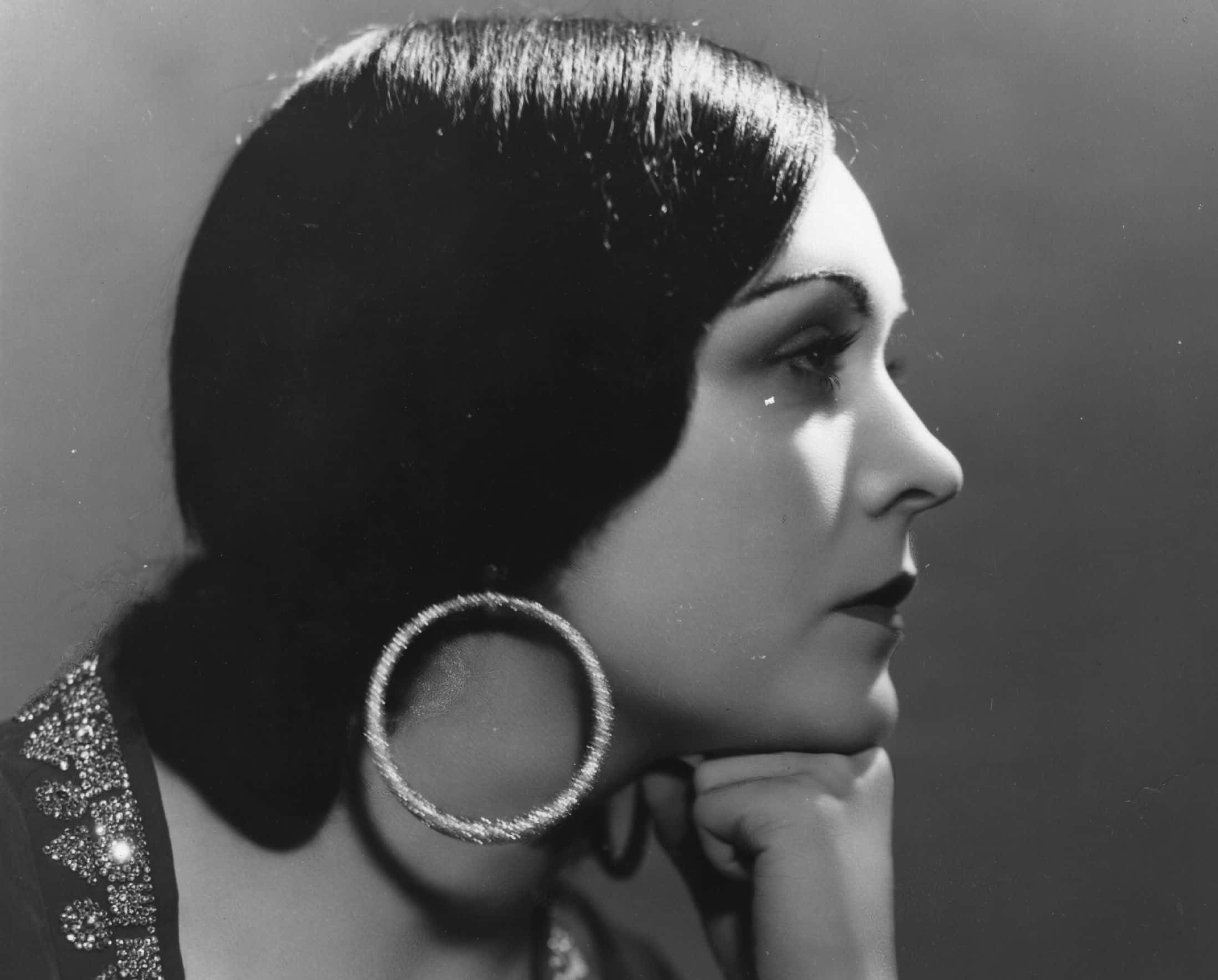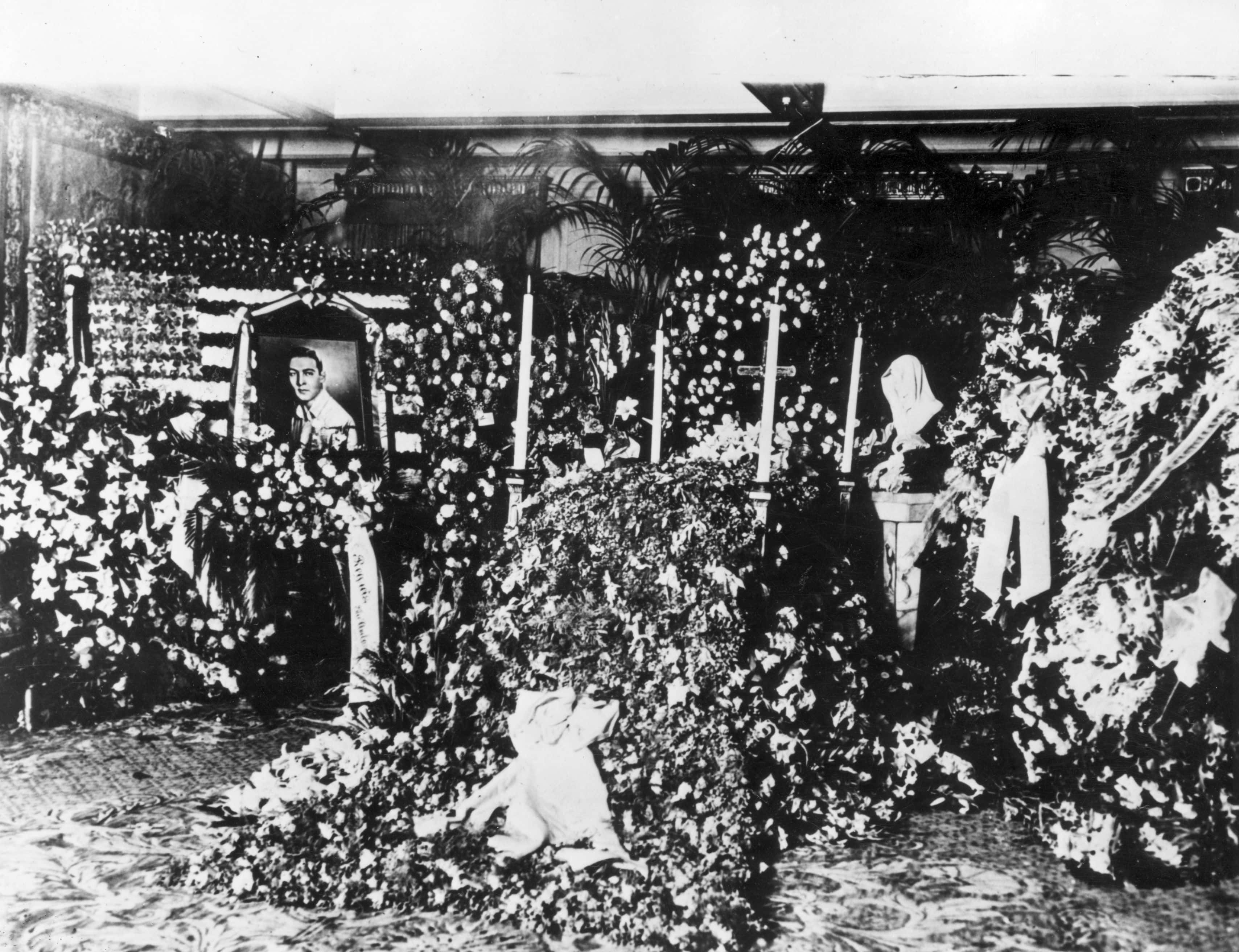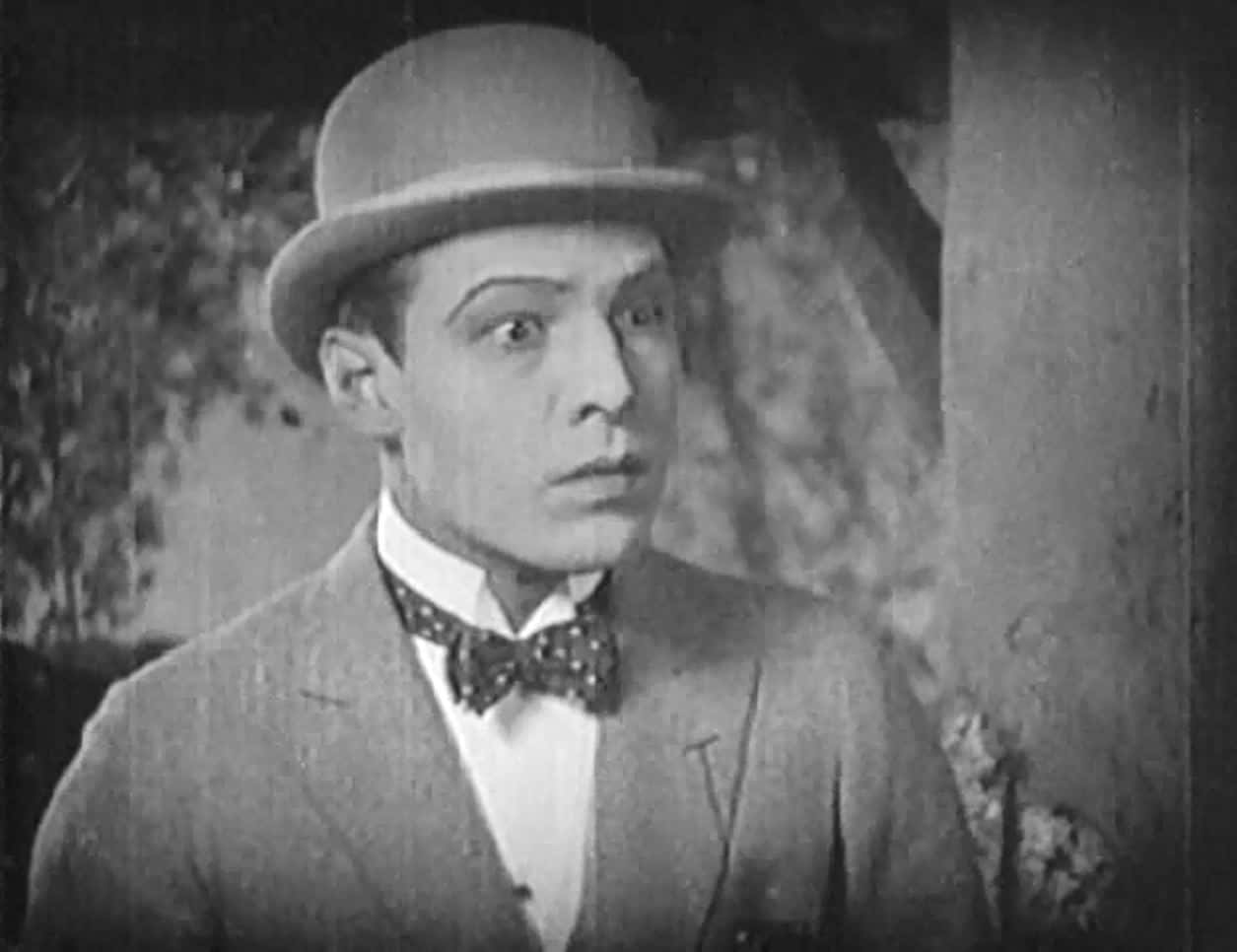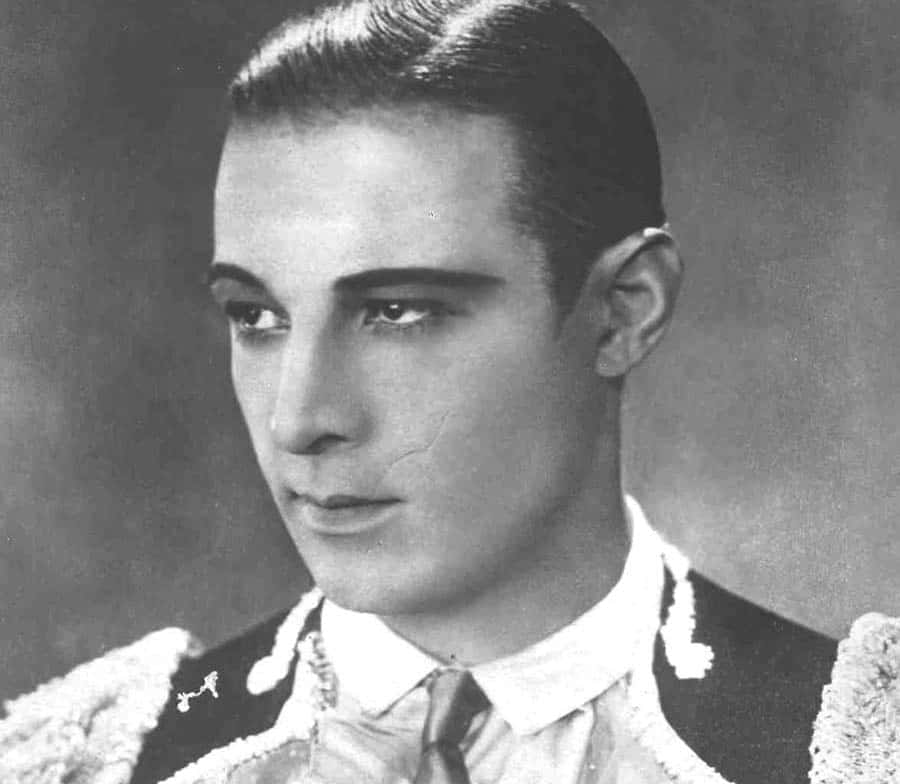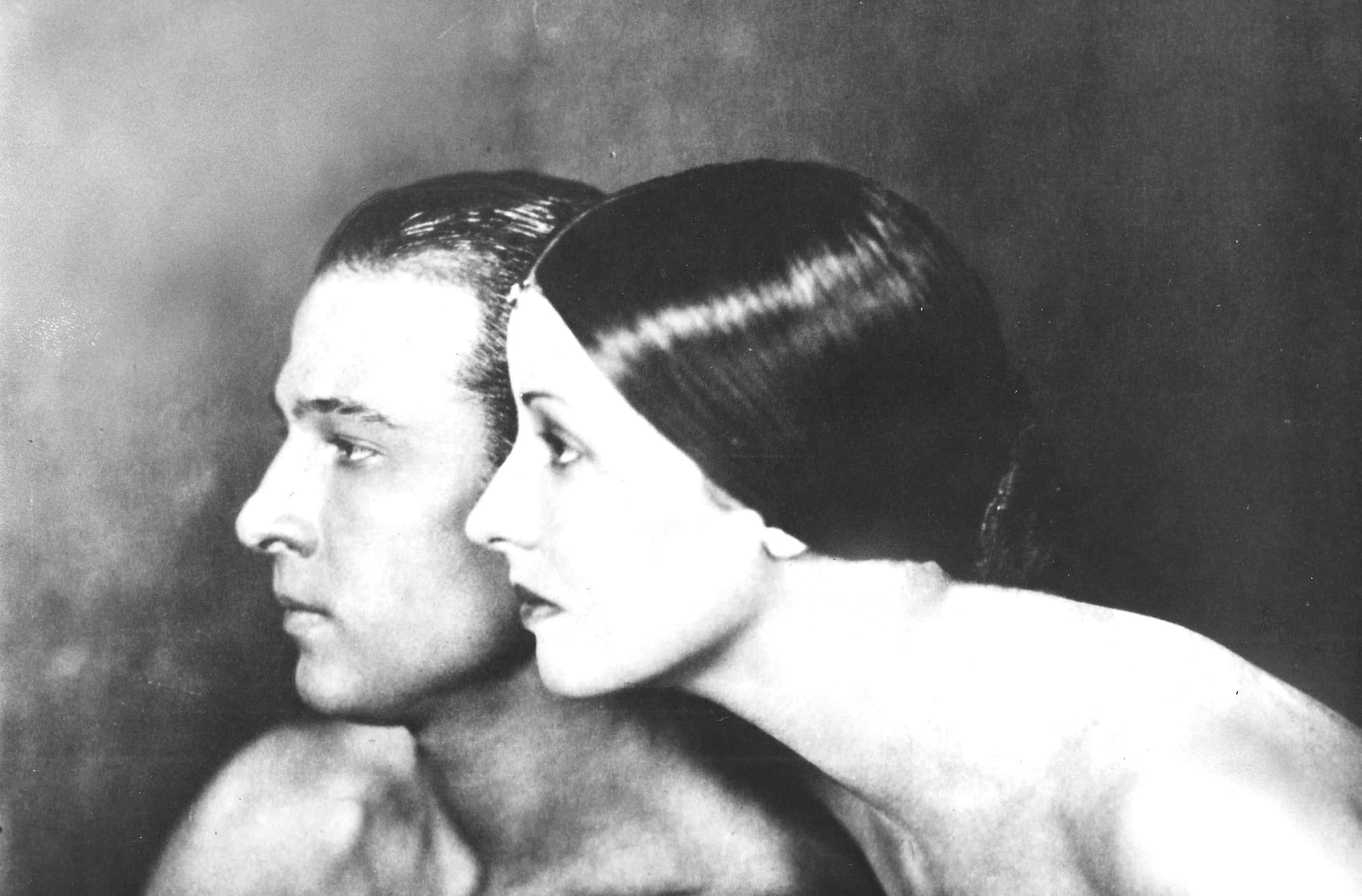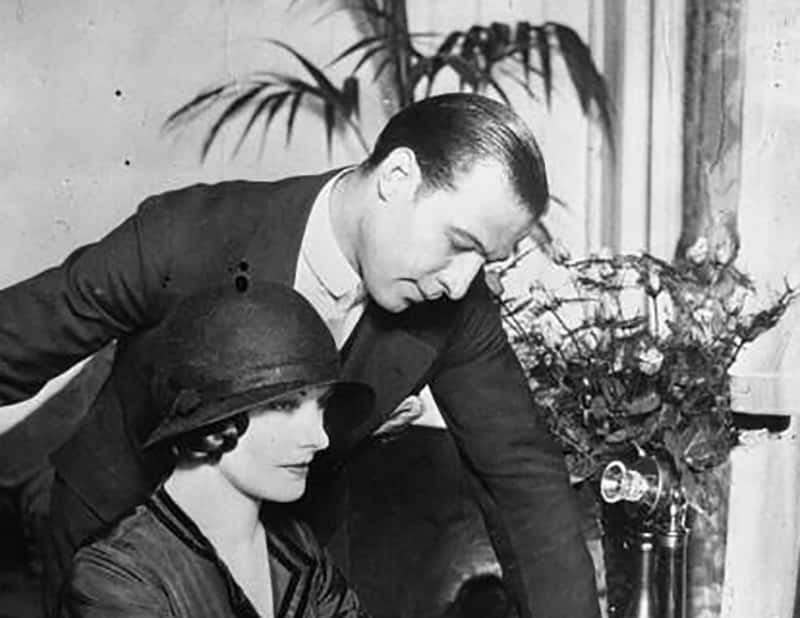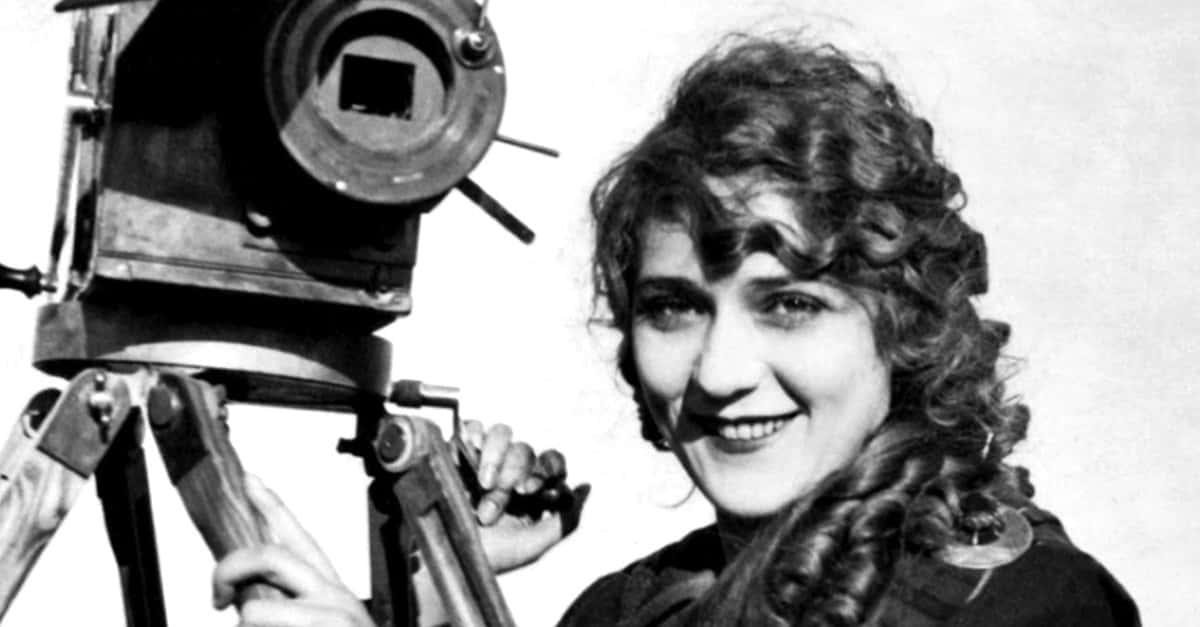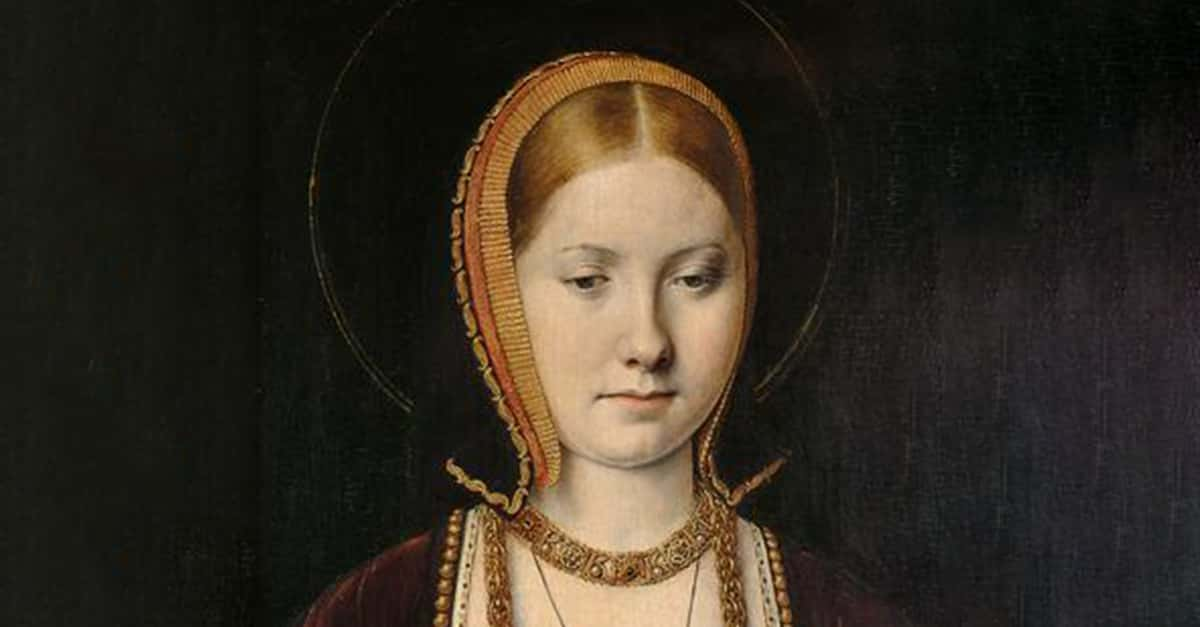For a tragically brief time in the 1920s, Rudolph Valentino romanced the world. The “Latin Lover” was one of the biggest stars on the silver screen—and when his life was cut brutally short at the height of his fame, the fallout was legendary. But behind his sad, soulful eyes lurked secrets that were even darker than his infamous end.
Rudolph Valentino Facts
1. His Name Was Much Different
Though Valentino is now a one-name wonder, his birth name was more than a mouthful. When the future heartthrob was born on May 6, 1895 in Italy, his parents christened him Rodolfo Pietro Filiberto Raffaello Guglielmi di Valentina d'Antonguella. Yeah, I can see why the studios went with “Rudolph Valentino” instead.
2. His Love Life Was Darker Than People Imagined
Despite his persona as a suave ladies’ man and a "Latin Lover," Valentino claimed his love life was tragic. As he once confessed to a journalist, “The women I love don't love me. The others don't matter." According to the heart-wrenched Valentino, he was always unhappy in love. And uh, when you see what happened to him, you might agree.
3. He Was a Spoiled Brat
Valentino was certainly no late bloomer, and even as a child people commented on how good-looking he was. This had devastating consequences. His mother spoiled him rotten and coddled her beautiful baby boy. This also drove a wedge between Valentino and his macho father, who thought his son was becoming a “sissy.”
4. Tragedy Hit Him Early
Tragedy would come to define the Latin Lover’s final years, but it was actually a part of his life from an early age. His older sister Beatrice passed when she was an infant, and his father died when the boy Valentino was just 11 years old.
5. He Was a Dreamer
Valentino knew he was destined for great things, and he left Italy to seek out his fame and fortune in America, going through Ellis Island in December 1913 at the tender age of 18. Obviously—unlike many Hollywood hopefuls—this fame and fortune actually happened for our sweet-faced Rudolph. But they came with a price…
6. He Left a Job in Disgrace
Valentino’s spoiled childhood often came back to bite him in the butt. He was never a hard-working boy and had never done well in school, but these habits only became worse in the real world. While trying to make ends meet bussing tables in New York City, the teenaged Valentino got fired from the job for, well, not doing his job.
7. He Was Homeless
Valentino’s first few months in America weren’t exactly a dream. In fact, they were a downright nightmare. Because he couldn’t hold down a job or get an income, the aspiring actor often lived on the streets, and survived by begging for food at the restaurant that had just fired him. Now that’s gotta be a new low.
8. He Was an Exotic Dancer
Even from this reduced position, Valentino somehow managed to get himself into scandal. He next took up work as a “taxi dancer” in a cabaret—and yep, that’s just as racy as it sounds. The Hollywood hunk was a tango partner for hire, which wasn’t exactly the most respectable occupation at the time. But it got even juicier than that…
9. He Had a Scandalous Romance
While working as a dancer, Valentino met the unhappily married Chilean heiress Bianca de Saulles, and it reportedly wasn't long before the Latin Lover got a new Latin mistress. They started plotting her split from her husband John, with Valentino even testifying at their divorce trial. And that’s where things got really ugly.
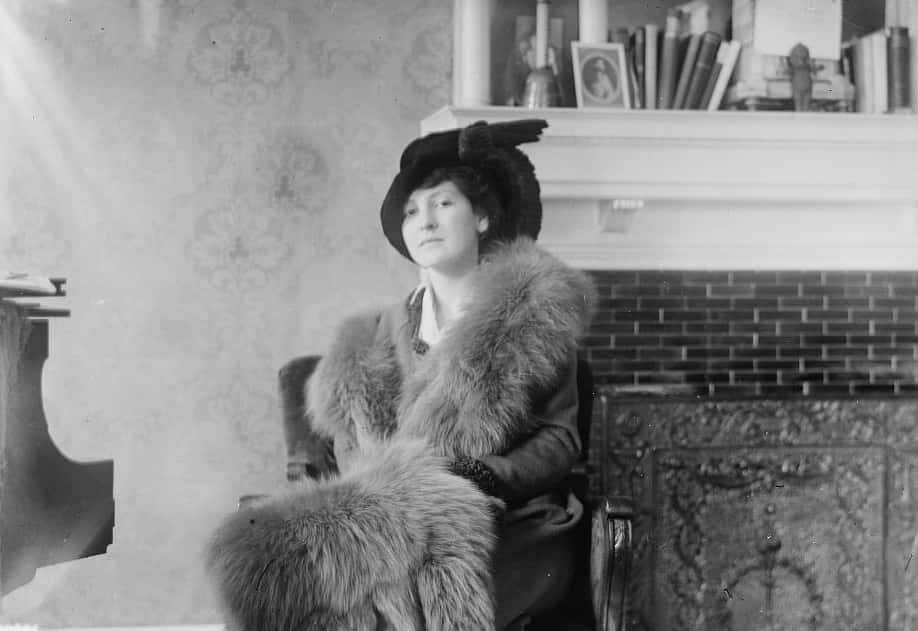 Flickr, The Library of Congress
Flickr, The Library of Congress
10. He Was Accused of a Dirty Deed
After the divorce when through, John de Saulles got a brutal revenge on his romantic rival. The tycoon called up every political connection he had, accused Valentino of being a gigolo, and had him detained alongside his supposed "madame." Valentino only ended up spending a couple nights behind bars…but the damage was done.
11. He Was Involved in a Shooting
There’s a heartbreaking coda to Valentino’s intrigue with Bianca de Saulles. Just after the scandalous divorce trial, Bianca fatally shot her ex-husband during a heated custody argument. Adultery, divorce, and now murder? It was too much for Valentino, and he skipped town for the West Coast—and even more intrigue.
12. He Was a Boy Toy
Even before Valentino was famous, the ladies loved him. While trying to make it in Los Angeles, he was a lowly dance instructor, but still somehow won himself a retinue of wealthy older women who were more than happy to lend him their luxury cars and perform other favors for him. Um, Dirty Dancing, anyone?
13. He Hated His Early Roles
Eventually, Valentino’s smooth looks and suave vibes couldn’t help but land him roles in Hollywood….just not the ones he actually wanted. Because he was “exotic” (heavy air quotes on that one, folks), directors usually cast him as the villain or the gangster to begin with. But destiny was about to call on the Latin Lover.
14. His First Marriage Was a Sham
Around this time, Valentino met the woman who would become his first wife, the beautiful actress Jean Acker. But the relationship redefined "scandalous." Acker was actually a lesbian who married Valentino to escape a volatile love triangle with two other actresses. Did this end well? I’m sorry, did you just read that last sentence? Heck no!
15. His Wife Rejected Him in a Brutal Way
Acker immediately regretted her actions. Like, very immediately. On the lovebirds’ wedding night, Acker locked Valentino out of their room, and continued to refuse him forever after. Their union was never consummated, and they separated quickly, divorcing in 1921. Though as we’ll see, not without a truckload more scandal.
16. He Wanted to Be Self-Made
Some time around 1920, Valentino started reading the bestselling novel The Four Horsemen of the Apocalypse by Vincente Blasco Ibanez. When he found out that Metro studios had bought film rights for the story, he strode into their office with the intention of demanding a part in the flick. What actually happened was much better.
17. He Had a Date With Destiny
When Valentino spoke to Metro, he found out that they were looking for him. Screenwriter June Mathis had seen Valentino's latest film and knew she had to have him for the part of Julio Desnoyer, which was miraculously one of the lead roles in the ensemble cast. It was the part that would make Valentino—but it also broke him.
18. His Breakout Role Was a Nightmare
Valentino’s days on the set of Four Horsemen were cold and cruel. Veteran director Rex Ingram signed on, but he had no faith in the green actor and the pair clashed continually. The studio wasn’t much help either: They refused to give Valentino any raise, and even made him pay for his costume. I wish I could say they didn’t do worse.
19. His Studio Cruelly Mistreated Him
After The Four Horsemen of the Apocalypse became a bona fide blockbuster, Metro studios somehow did Valentino even dirtier. Likely driven by Rex Ingram’s dislike for the actor, they staunchly refused to admit he was a star—even though he now was—and relegated him to a B-movie for his next project, the dud Uncharted Seas.
20. He Walked out of His Job
Valentino was a spoiled brat at heart, and he had no problem stamping his foot when he didn't get pampered. He left Metro studios in a huff just as soon as he could, hooking up with Famous Players-Lasky instead and hoping to bite into even juicier parts and payrolls. To say he got what he wanted would be a huge understatement.
21. He Redefined "Heartthrob"
In 1921, Valentino became iconic. That year, he played the lead in The Sheik as Sheik Ahmed Ben Hassan. The film didn't just define Valentino's legacy, it also changed culture. Valentino’s sultry acting in the film gave the word “Sheik” a new meaning. More than just an Arab title, after 1921 it denoted any irresistibly attractive man.
22. He Inspired a Disturbing Trend
At the time, there were countless men who imitated Valentino’s distinctive, heavily-pomaded hairstyle and adopted his general demeanor. These guys were not-so-affectionately referred to as “Vaselinos.”
23. He Had a Diva Attitude
Like so many of the mysterious ladies’ men who came before him, Valentino wasn’t the easiest person to get along with. Our forever-spoiled brat soon became frustrated at Famous Players-Lasky for their “low” salaries, even though he was making a bundle. Hilariously, Valentino went on a one-man strike to make his point…and it blew up in his face.
24. He Made the Public Hate Him
After months of lawsuits resulting from Valentino’s “strike,” the temperamental star went full diva. In an embarrassingly tone-deaf open letter he titled “Open Letter to the American Public,” Valentino complained about his “pitifully” low pay…even though his weekly salary of $1,250 was what some Americans made in a year. Yikes.
25. He Had a Bitter Falling out
Valentino didn't just feud with studios—he also cruelly wounded his best friends. After June Mathis discovered him, they started a long friendship and collaboration. Until, that is, Valentino rejected Mathis’ screenplay for his upcoming film. Mathis was so offended, she didn’t speak to him for years. But if you think that's vindictive, just wait.
26. His Beard Caused a Riot
At the height of his career, Valentino was so famous that even the most minute changes to his physique caused huge frenzies. In 1925, the fact that Valentino grew a beard for a film role became literal front page news and sparked a sensation.
27. Men Despised Him
Women may have loved Rudolph Valentino, but men often felt extremely threatened by his more effeminate masculinity, particularly in America. There were frequent reports of American men walking out of Valentino's movies in disgust, leaving their swooning women behind them. I think the girls liked it that way, guys.
28. He Was Deeply Insecure
Valentino was on top of the world as a sex symbol—but he carried around a dark secret. He was incredibly insecure about the criticisms men lobbed at his version of masculinity, and would even carry around news clippings that discussed his particular appeal so he could pull them out and criticize them. This was a recipe for disaster.
29. The Newspapers Attacked Him
Even journalists were threatened by Valentino, and one scathing article caused an absolute scandal. In a Chicago Tribune piece now infamous as “the pink powder puff” article, the anonymous writer somehow blamed Valentino for a powdering station he’d come across in a bathroom. Valentino’s response was…not good.
30. He Tried to Start a Duel
Enraged and newly insecure, Valentino wrote into the newspaper and challenged the writer to…a duel? Well, as much as he could. Actual dueling was illegal at the time, so the Latin Lover settled for a boxing match. The writer never answered, but that didn’t mean the hotheaded Valentino backed down from the challenge…
31. He Became an Unexpected Champion
Eventually, another newspaper's boxing correspondent, Frank O’Neill, agreed to fight in the original writer’s place. But if O’Neill though it would be a nice little publicity bout, he was very wrong. Valentino's trainer was none other than heavyweight champion Jack Dempsey, and the actor actually won the fight. And they say Rocky IV is unrealistic.
32. He Was a Punishing Perfectionist
One of Valentino’s biggest pet peeves on set was, well, the set itself. He despised anything he thought was fake, especially shooting on studio lots. He always pushed to film his movies on location whenever humanly possible, and wasn’t above throwing hissy fits if executives dared confine him to a sound room for a project.
33. His Second Wife Was an It Girl
When Valentino was filming the B-movie Uncharted Seas, he met the woman who would change his life—though not exactly for the better. He and costume designer Natacha Rambova started a steamy affair on set. The stylish, dark, and stormy power couple married in 1922...and then the Hollywood scandal really hit the proverbial fan.
34. He Was a Bigamist
Mere days after his marriage to Rambova, Valentino got one rude awakening. Officers detained him and threw him in the slammer again, this time for bigamy. Wait, what? Well, in California, you have to wait a full year after divorcing to re-marry, so in the eyes of the law, Valentino was still married to Jean Acker when he wed Rambova.
35. He Went Through Enormous Trials for Love
Valentino and Rambova had to wade through some Romeo and Juliet realness to officially tie the knot. After Valentino posted bail, the couple still had to stay in separate apartments for another full year before getting married again in 1923. For all that effort, it’s a darn shame they turned out so dysfunctional.
36. Everyone Loathed His Wife
The reported problem with Valentino’s wife was that, well, she was a stone cold witch and everybody hated her. Rambova at least partially caused Valentino’s fallout with June Mathis, and most of his other friends found her utterly controlling and toxic to his career. But that doesn't mean she deserved what was coming...
37. He Loved Dogs
“The Latin Lover” was also an ardent dog lover. Never one to resist an opportunity for flair, he had an Irish Wolfhound that he named "Centaur Pendragon" and a Great Dane named "Kabar." Whoa there Rudolph Valentino, “Centaur Pendragon”? I’m getting some big nerd energy coming from you and I don’t hate it at all.
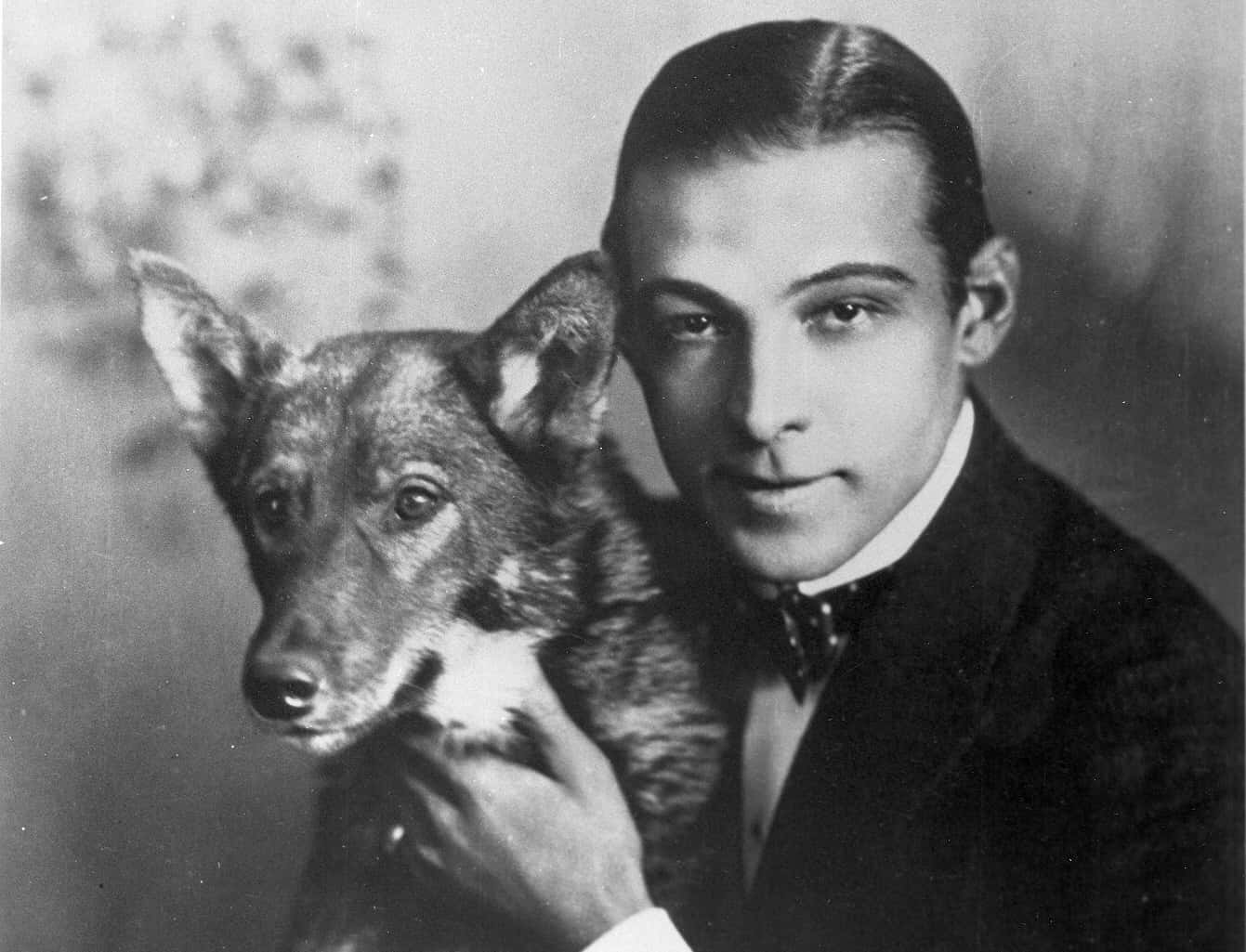 Wikimedia Commons, Orange County Archives
Wikimedia Commons, Orange County Archives
38. People Claimed He Was Gay
Given Valentino’s unconventional masculinity for the time, many narrow minds whispered that he was a closeted homosexual with lovers ranging from Mexican actor Ramon Novarro to French poet Jacques Hebertot. There’s no actual evidence for these affairs, though I can’t say it would hurt Valentino’s bedroom appeal too much.
39. He Suffered From a Ravaging Illness
In August 1926, Valentino was on top of the world—but the bigger they are, the harder they fall. On the 15th, Valentino suddenly collapsed at the Hotel Ambassador in New York. He was rushed to hospital with what doctors would later identify as perforated ulcers and underwent a routine surgery. In a little over a week, he was dead.
40. His Doctors Lied to Him
After having the surgery, Valentino developed infections and complications, in particular a fatal case of pleurisy in his left lung. In a horrific move, the doctors chose not to tell Valentino about his prognosis, letting him believe he'd make it. Sadly, this only made The Sheik’s final moments all the more heartbreaking.
41. A Bedroom "Toy" Is Named After Him
The Latin Lover would inadvertently come to play an intimate role in people’s bedrooms, at least in spirit. In the 1930s, Sheik Condoms came out and featured Valentino's silhouette on the packaging for years.
 Wikimedia Commons, Alf van Beem
Wikimedia Commons, Alf van Beem
42. There Was One Thing He Didn't Do
Despite the fact that he became a household name in America, Valentino never became an American citizen and never officially immigrated to the country. This hot-blooded Italian stayed Italian.
43. He Stood up for What Was Right
The Italian Valentino’s casting as an Arab man in The Sheik wouldn't go down well today, but the Latin Lover did have some woke words about the character that made him famous. When asked if his love interest would romance a “savage” in real life, Valentino snapped back, "People are not savages because they have dark skins."
44. He Stole the Scenery
June Mathis rewrote parts of The Four Horseman of the Apocalypse just to showcase Valentino as a star, including a scene where he seduces another man’s girl and has her dance the tango with him. Yep, that’s playing to his strengths.
45. He Never Forgot an Insult
At one point while bedridden and fatally ill, Valentino still couldn’t forget bygone slights to his masculinity. He turned and asked his attending doctor, “And do I now act like a 'pink powder puff'?" His doctor’s reply was heart-wrenching. The medic, knowing full well the star wasn’t going to make it, responded that he was actually “braver than most.”
46. His Last Words Were Heartbreaking
Up until his very last breath, Valentino thought that he was recovering, and spent his last words talking with doctors about his future. Supposedly, among his last words before passing were, "Don't pull down the blinds. I feel fine. I want the sunlight to greet me.” On August 23rd, he went into a coma and didn’t wake up. He was only 31 years old.
47. The Response to His End Was Incredibly Dark
After Valentino came the flood. When news of the star’s passing went around, the streets erupted with grief and chaos unlike anything Hollywood had ever seen. Not only did 100,000 mourners pay respect at his funeral, there were even reports of desperate suicides going on, with people following their matinee idol into the dark.
48. He Had a Fake Relationship
Valentino didn’t stop causing scandal even after he’d gone. Just before he passed, he was dating a new starlet on the block, the actress Pola Negri. The two likely played up their relationship for mutual publicity, so when it came time for Valentino’s funeral, Negri tried to take the spotlight from him in the most embarrassing way.
49. His Funeral Turned Into a Sideshow
At Valentino's funeral, horrified fans watched on as Negri made the day all about her. She theatrically sobbed through the entire service, fainted on his coffin, and proclaimed to anyone around who would listen to her that he had proposed just a few days ago (he probably hadn’t). And she wasn't even done yet.
50. His Girlfriend Desecrated His Memory
Negri's piece de resistance at Valentino's funeral was a "small," touching tribute to...herself, of course. According to actor Ben Lyon, on the day of the service, she demanded that attendants place an enormous flower arrangement on Valentino's coffin, which read out "P-O-L-A." Aw, what a sweet memory of Rudolph.
51. A Mystery Surrounds His Grave
For decades after Valentino’s passing, a mystery hung over The Sheik. Every year on the anniversary of his end, a veiled woman in black arrived at his tomb and placed a single rose on his grave. Eventually, it came out that the whole thing was—you guessed it—a publicity stunt. Still, the tradition stuck and continues to this day.
52. Tabloids Published a Scandalous Photo of Him
Following Valentino’s passing, a tabloid called the New York Graphic published a bogus photo of the dearly departed actor. What was so bogus about it, you ask? Well, it showed nothing less than Valentino’s ascendancy into heaven. Hey, haters gonna hate: The paper’s circulation got a major boost as a result of the picture.
53. His Name Was a Marketing Ploy
Although Valentino became famous as "The Latin Lover," not many people know that this wasn't an organic nickname. Instead, the studios gave him the name as a publicity stunt, and it gained steam after.
54. He Barred His Wife From His Presence
When United Artists studio signed on Valentino, they dreaded dealing with his infamous wife Natacha. As a result, their contract made one cruel request: Rambova was banned from all his film sets. Yeah, that’s pretty bad, but it’s probably worse that Valentino actually agreed to it. Maybe that explains his final act of cruelty…
55. He Gave His Wife a Disturbing Gift
Valentino's marriage never really recovered from the whole “You are contractually banned from seeing me” thing, and they divorced in 1925. But their bad blood didn’t even end when he died. Valentino passed a year after their divorce, but luckily for him, he’d updated his will in time—and in that will, he left Rambova one single dollar bill. Ouch.

